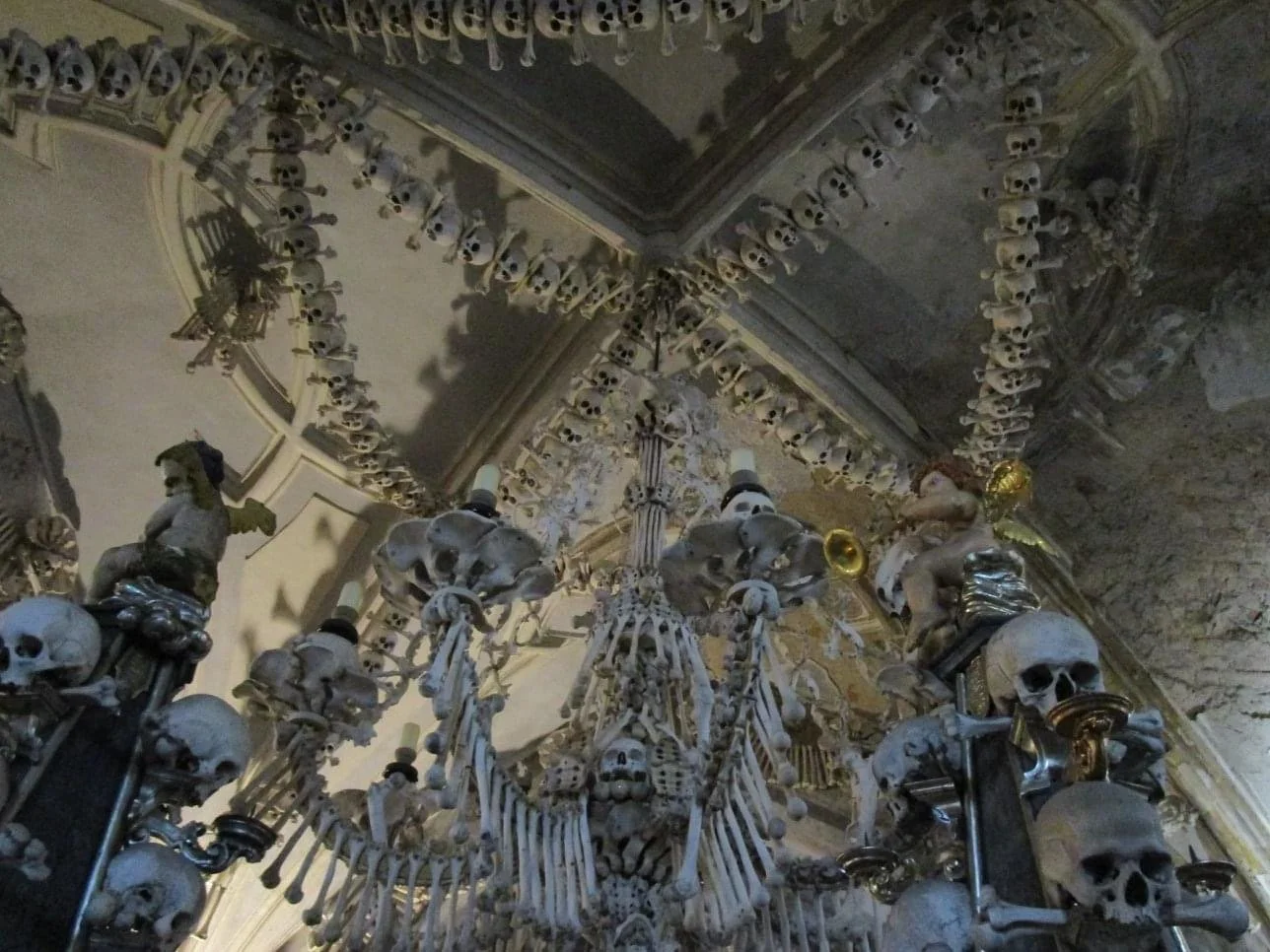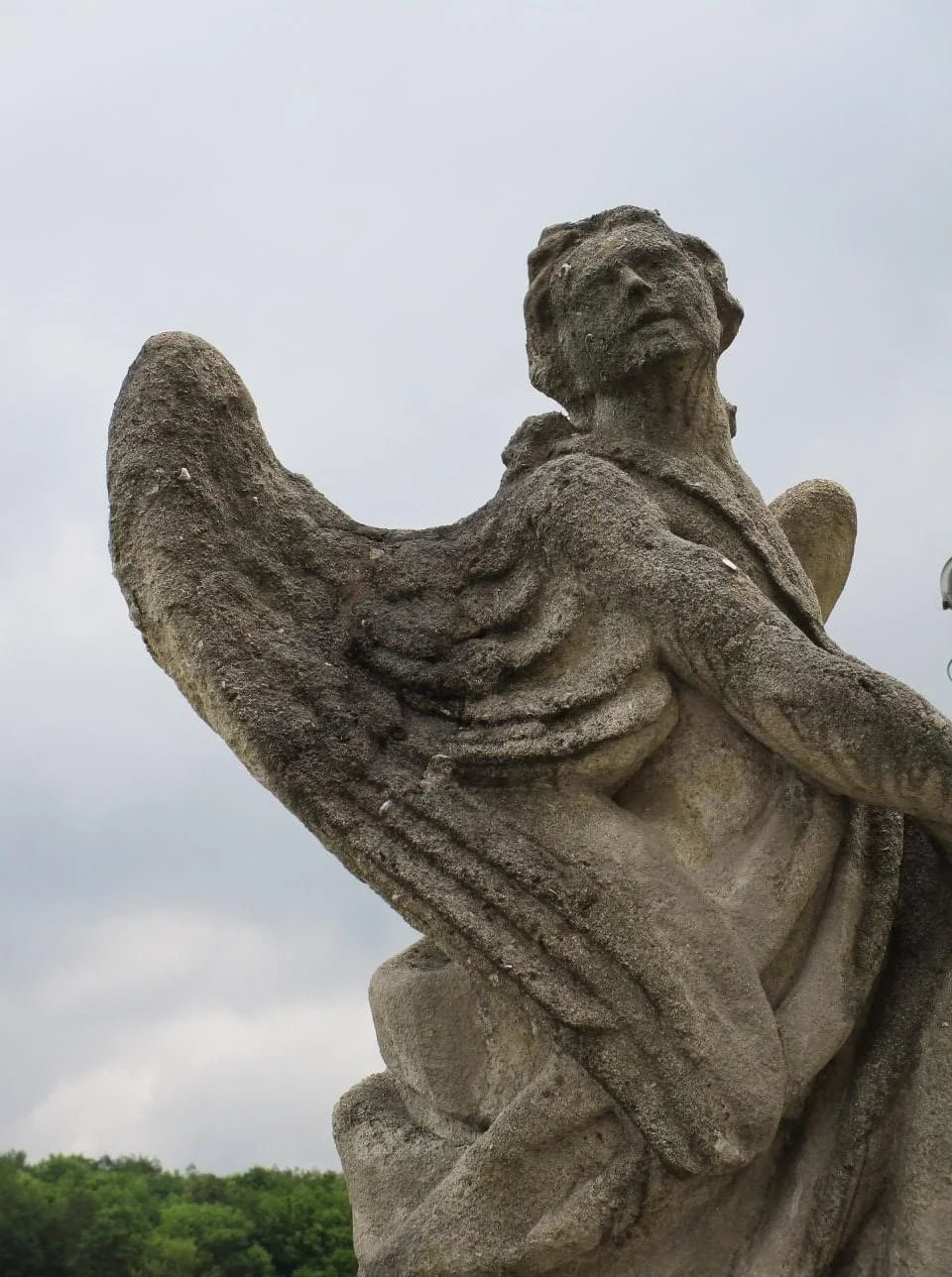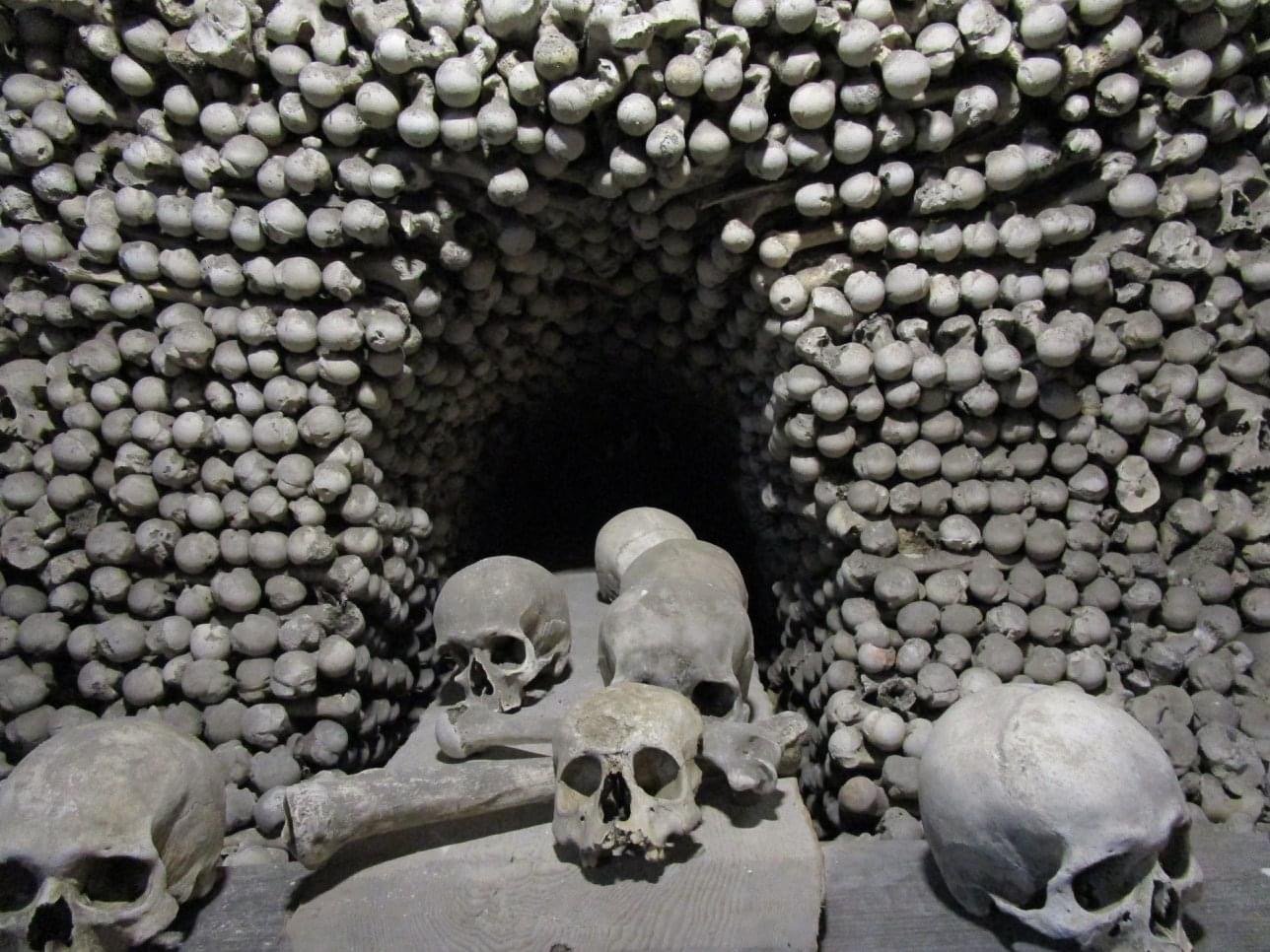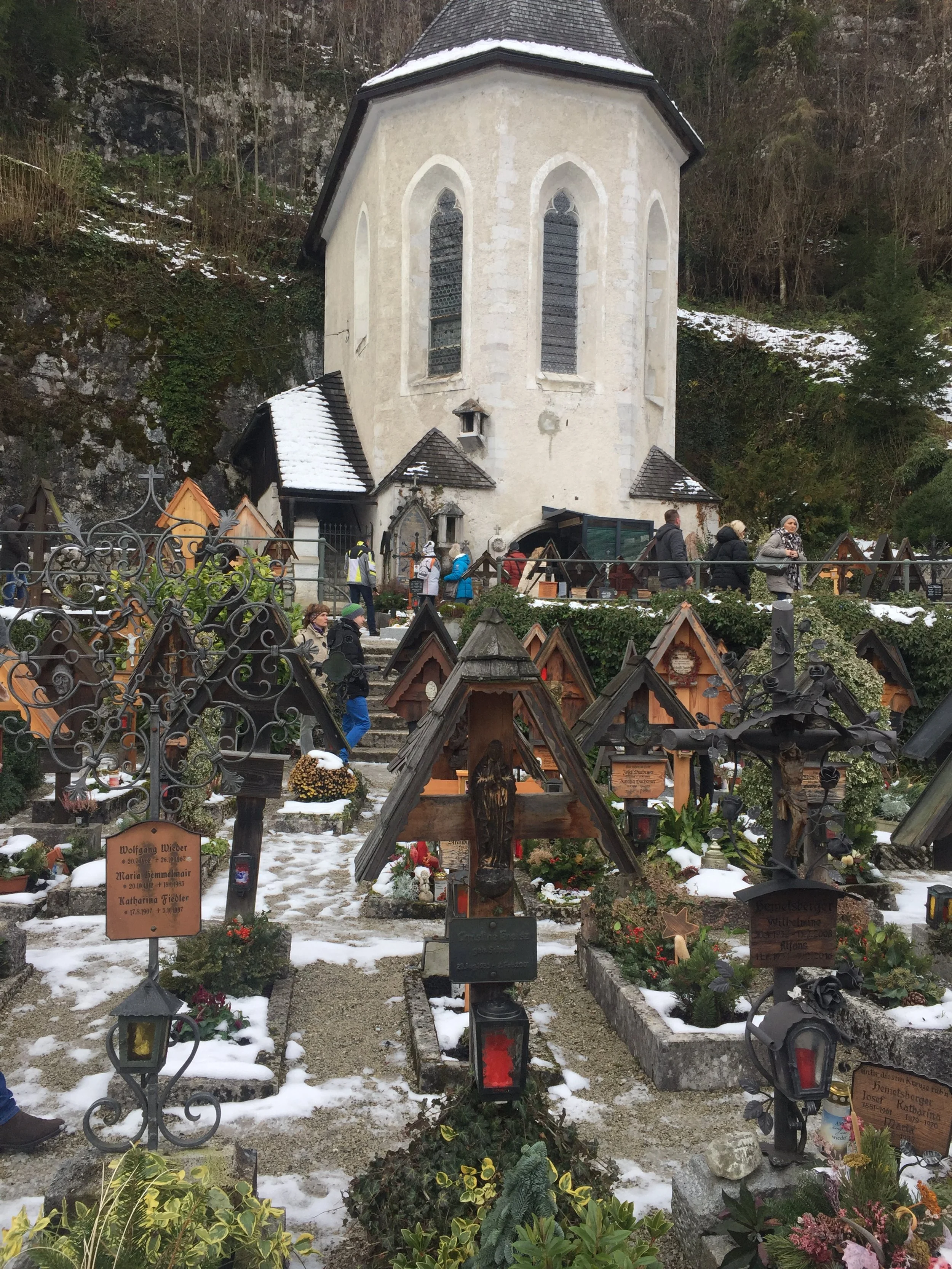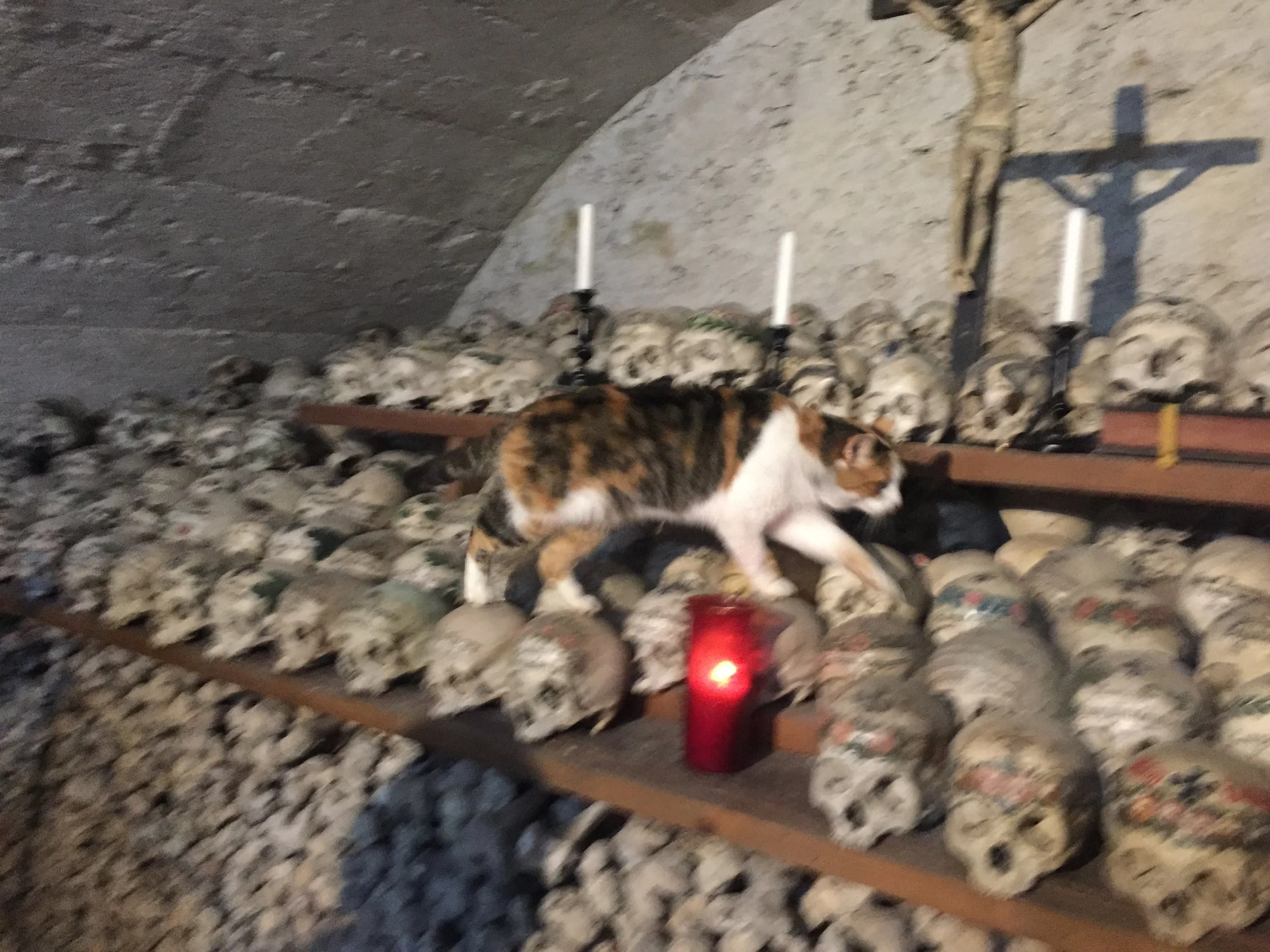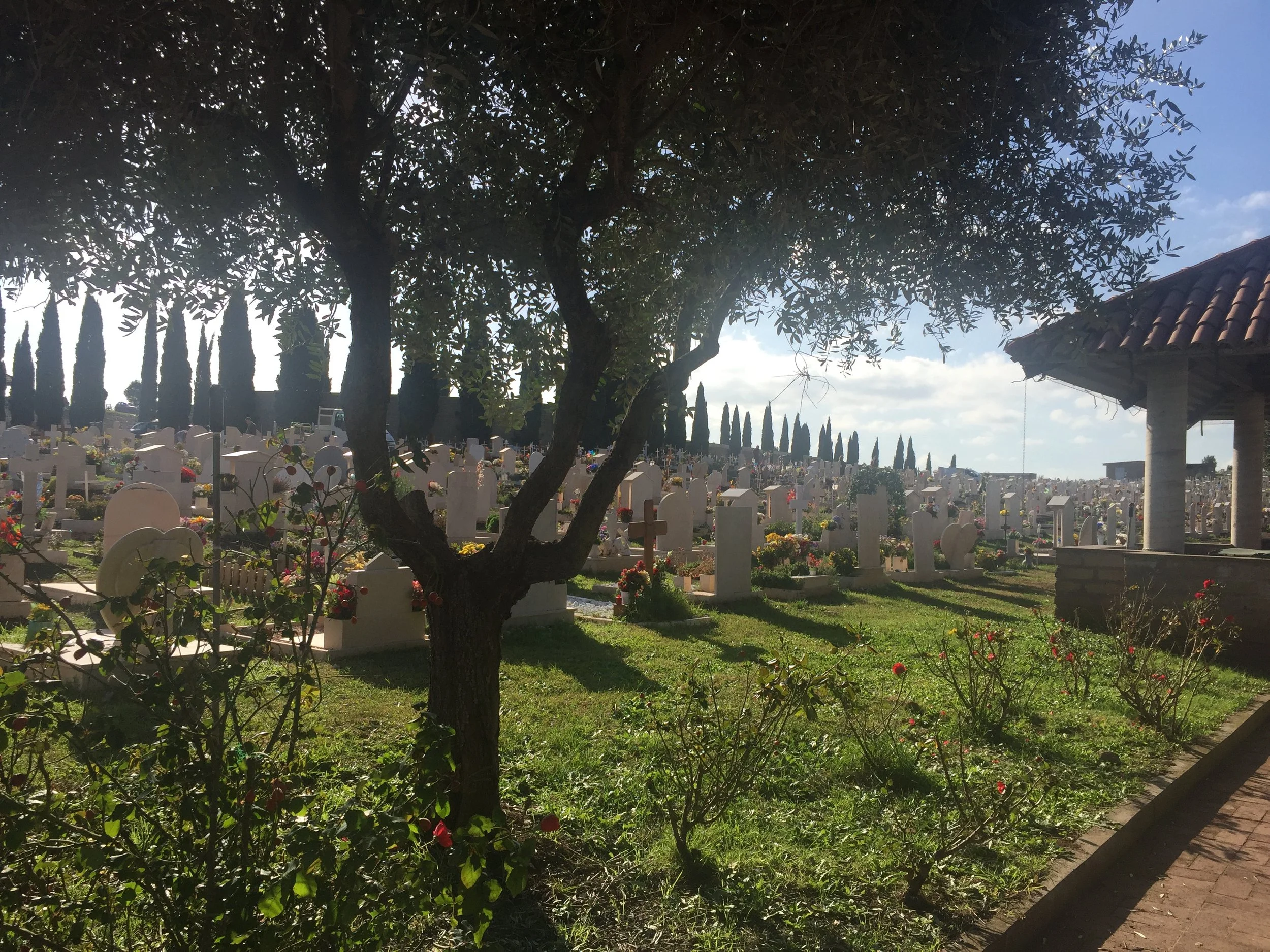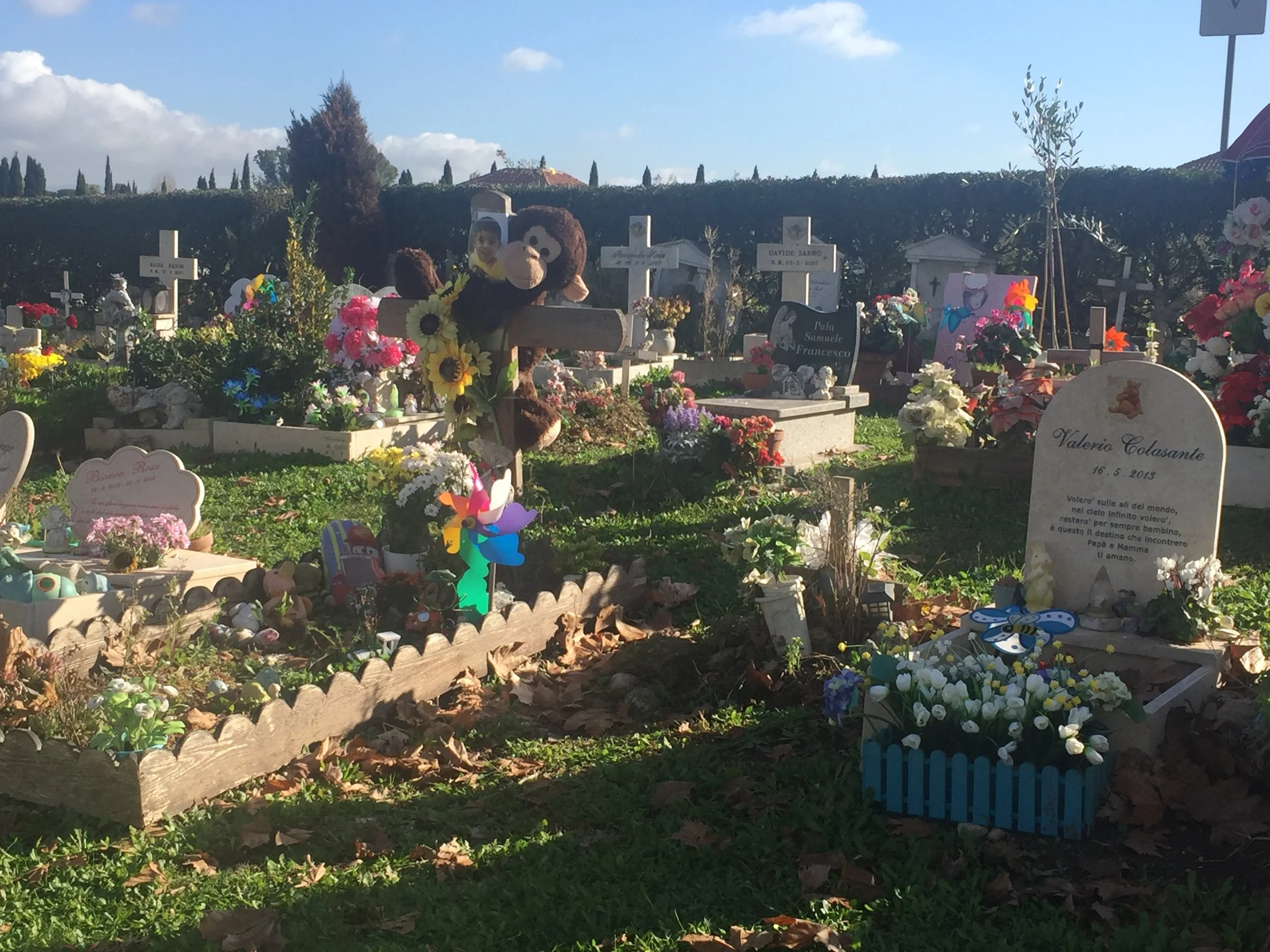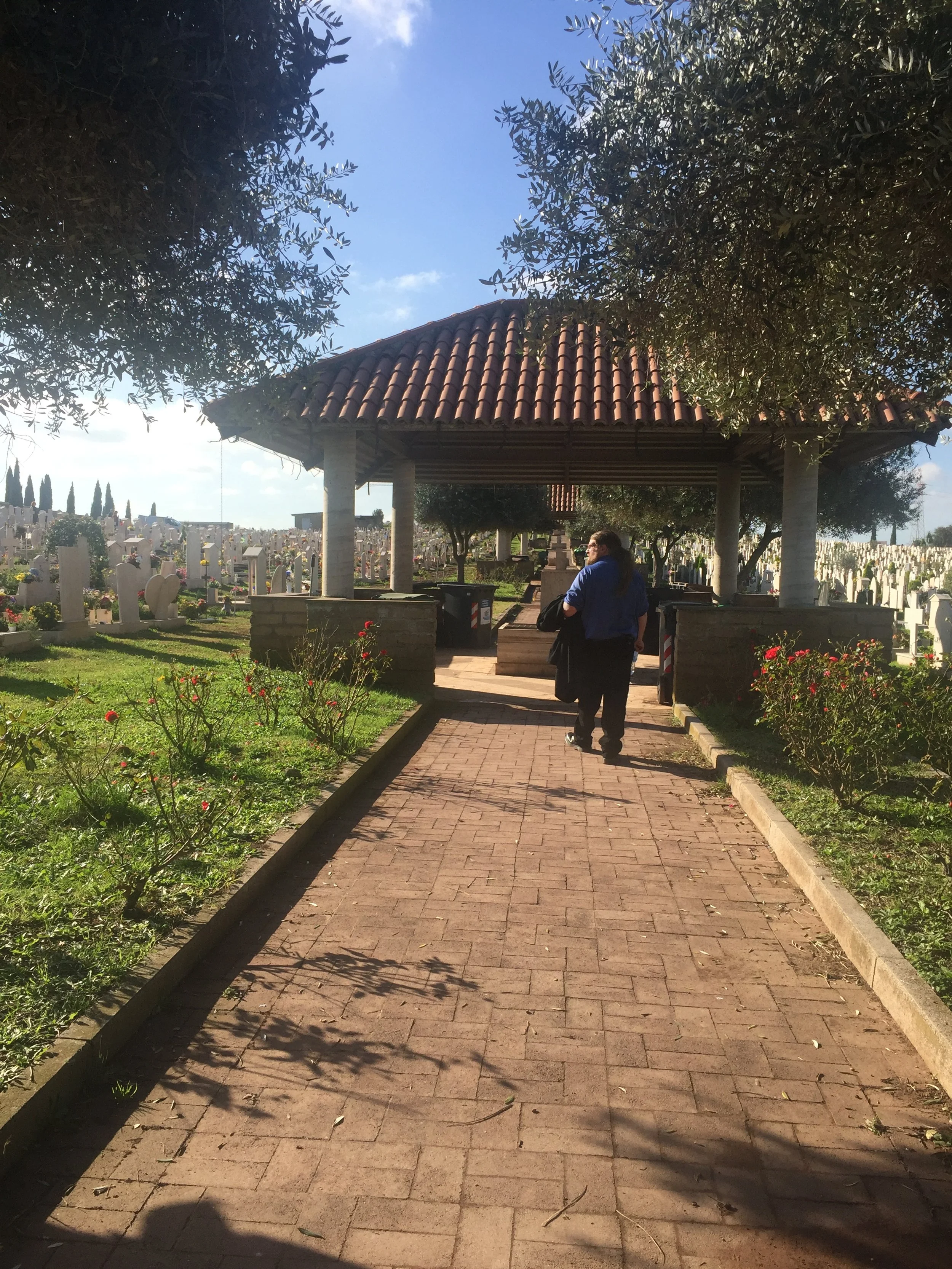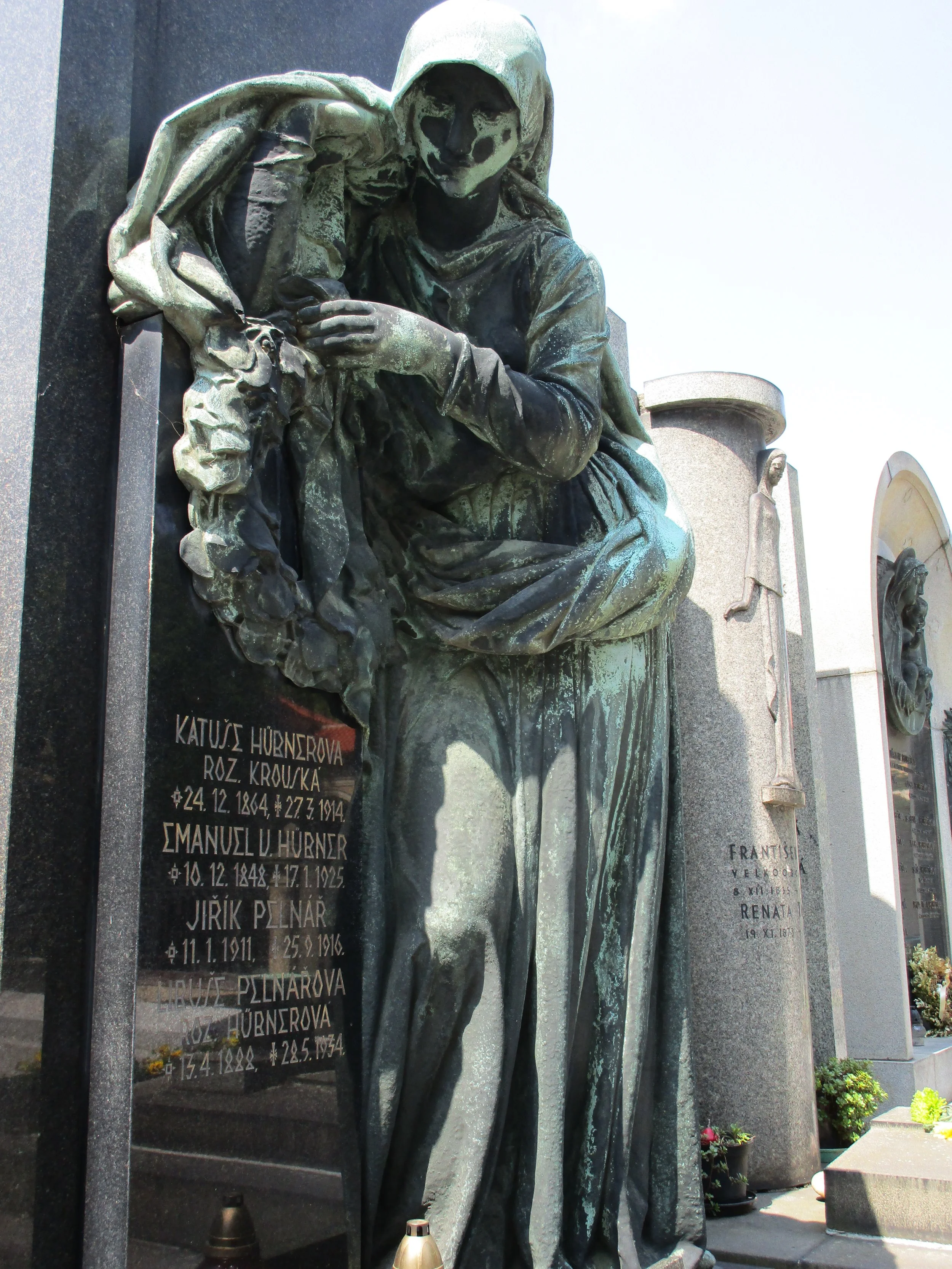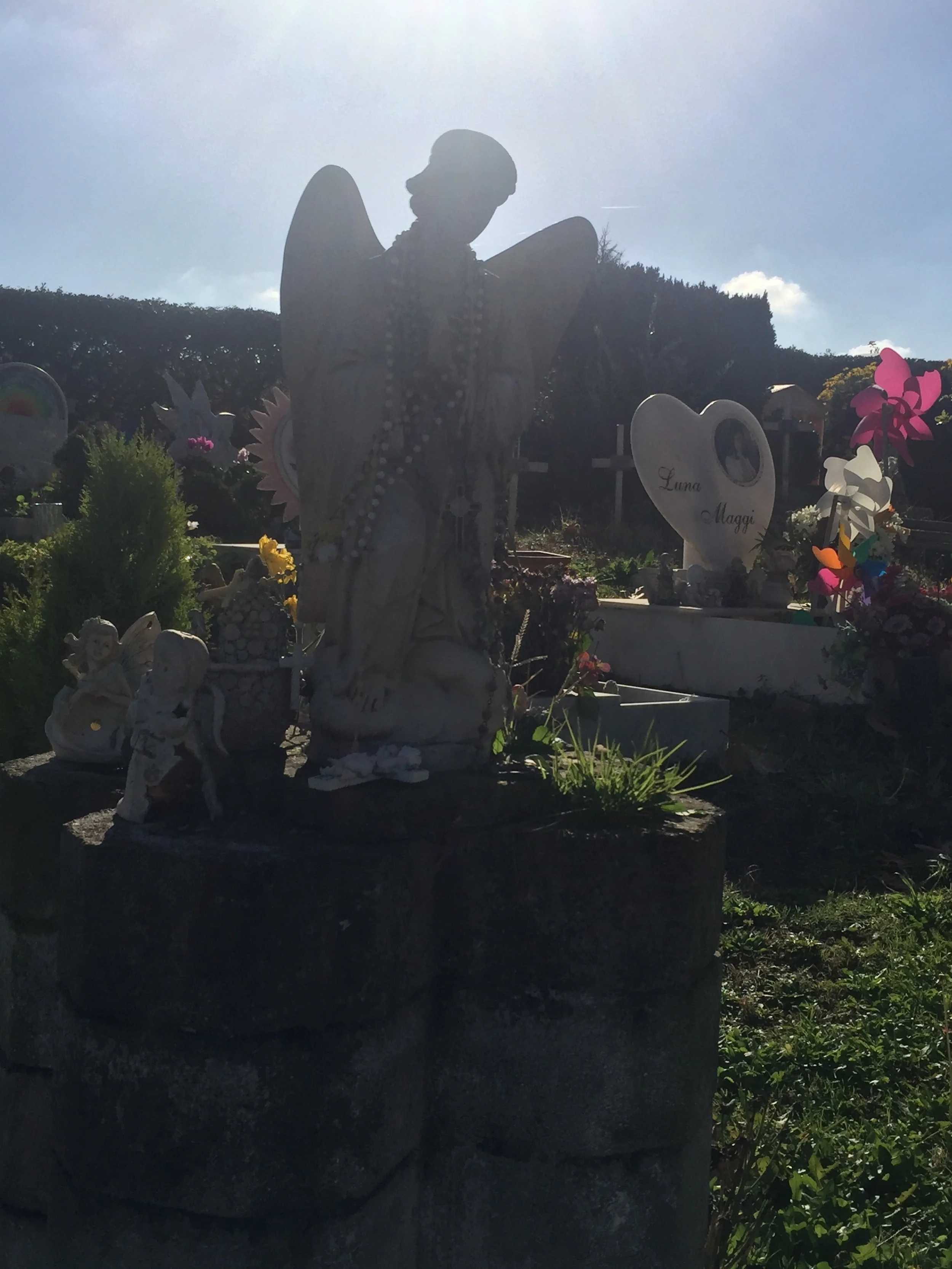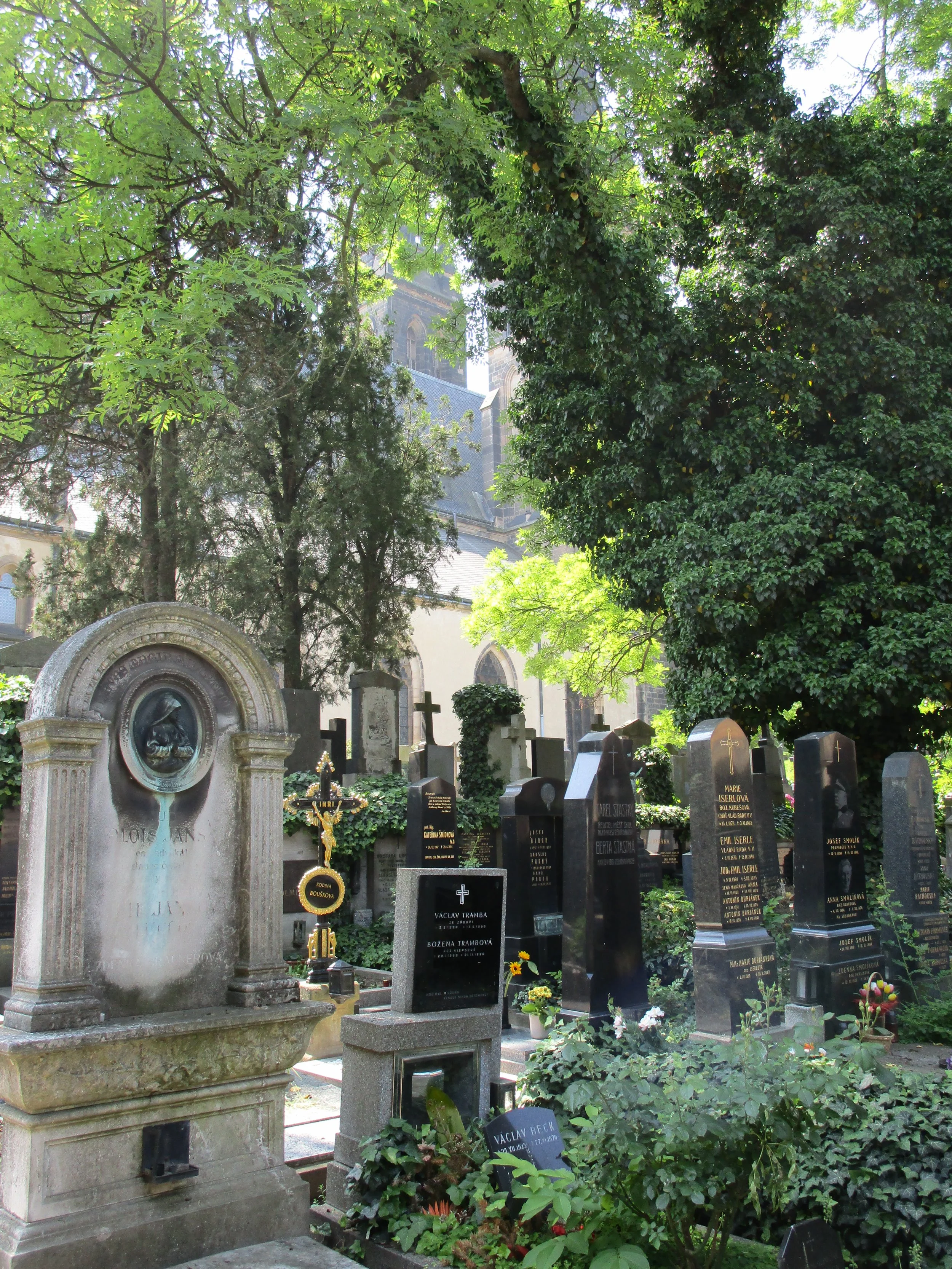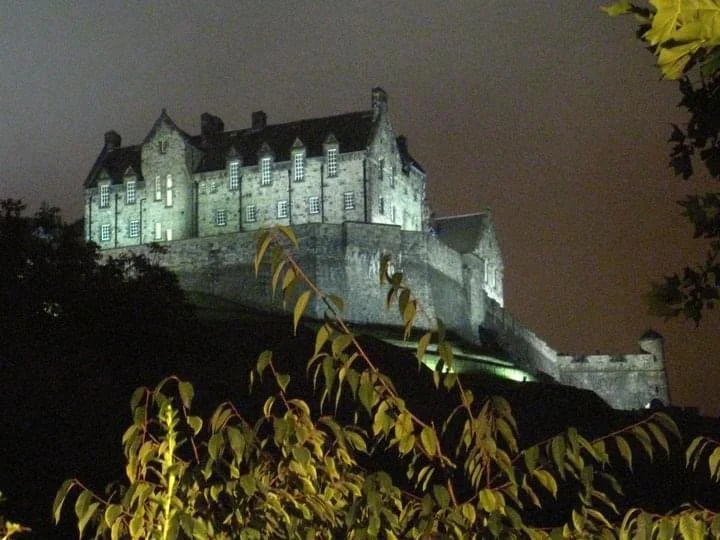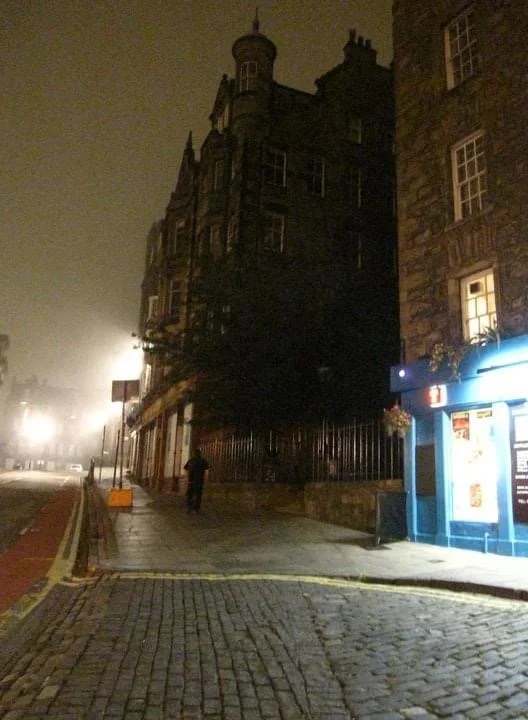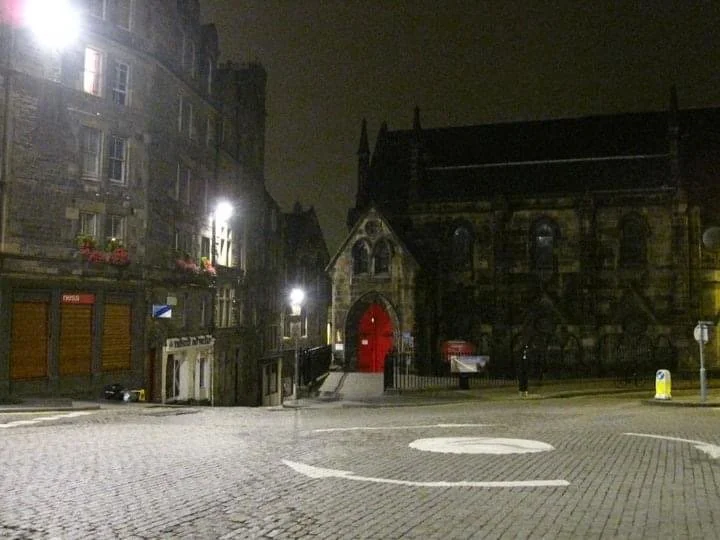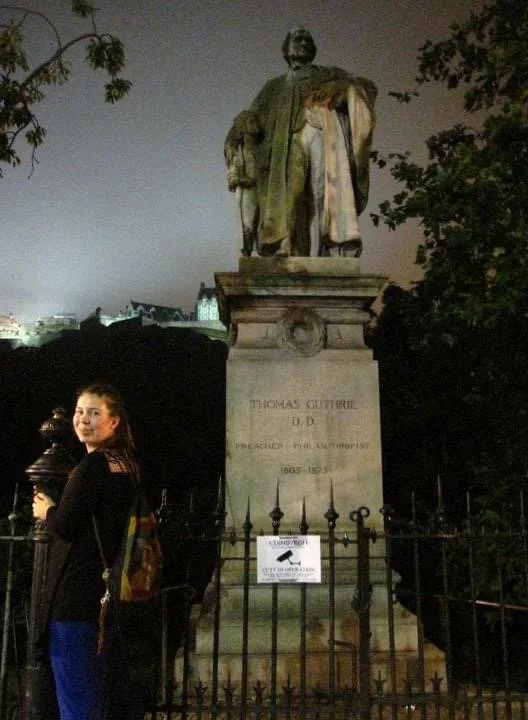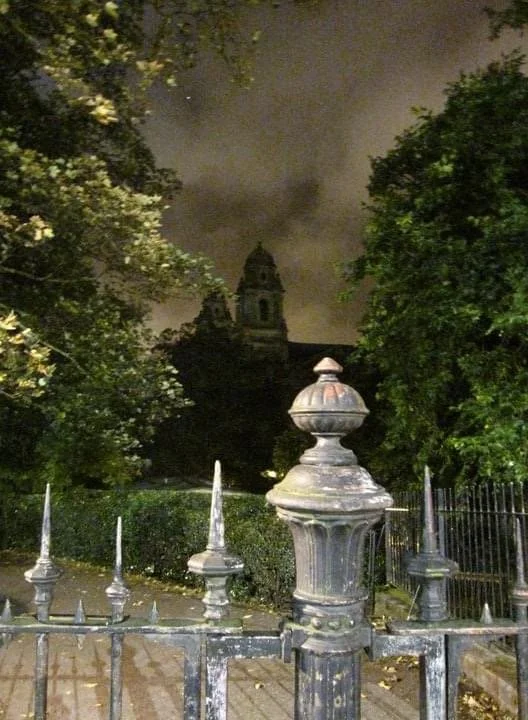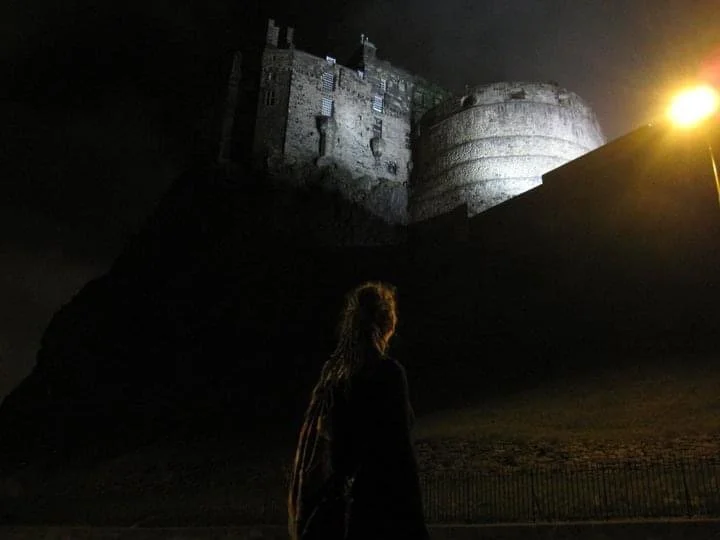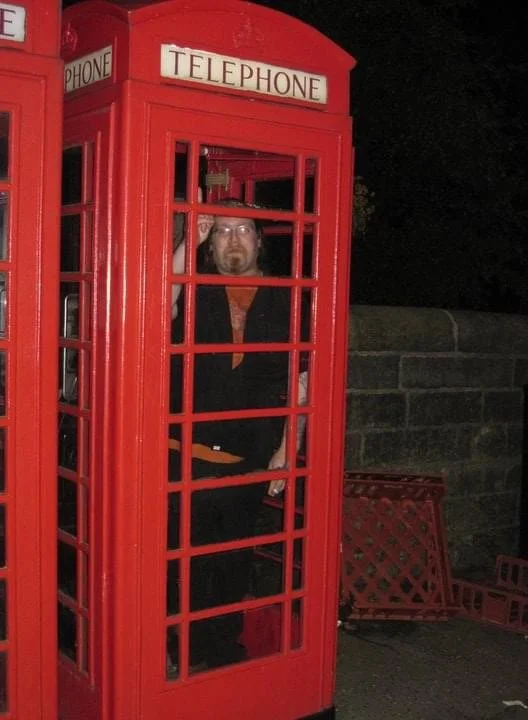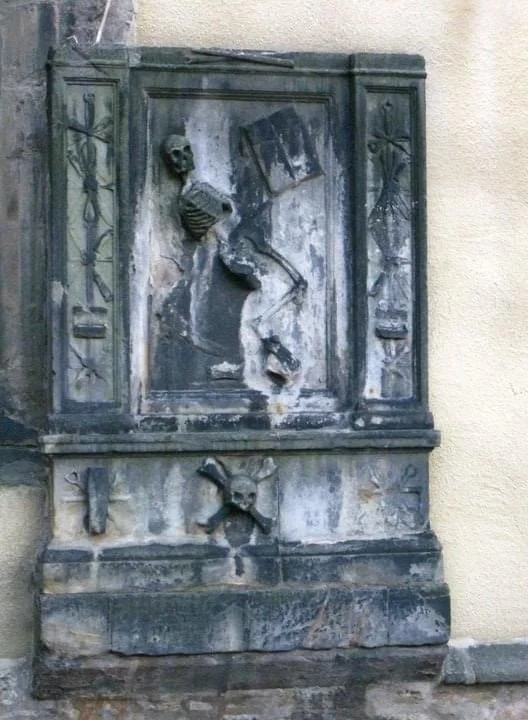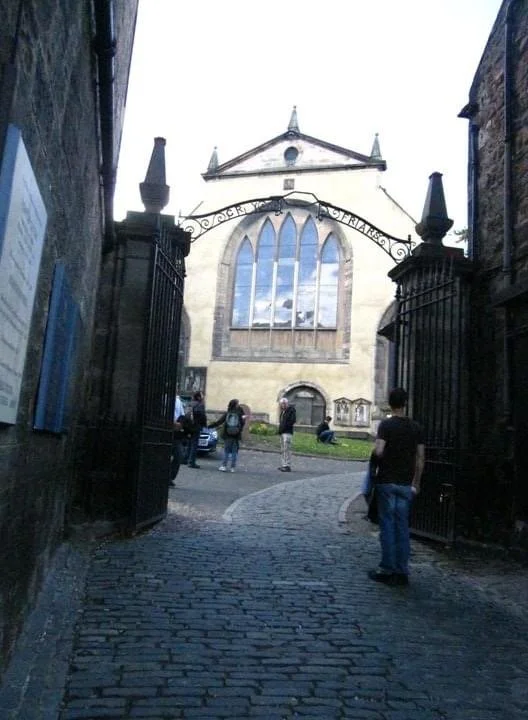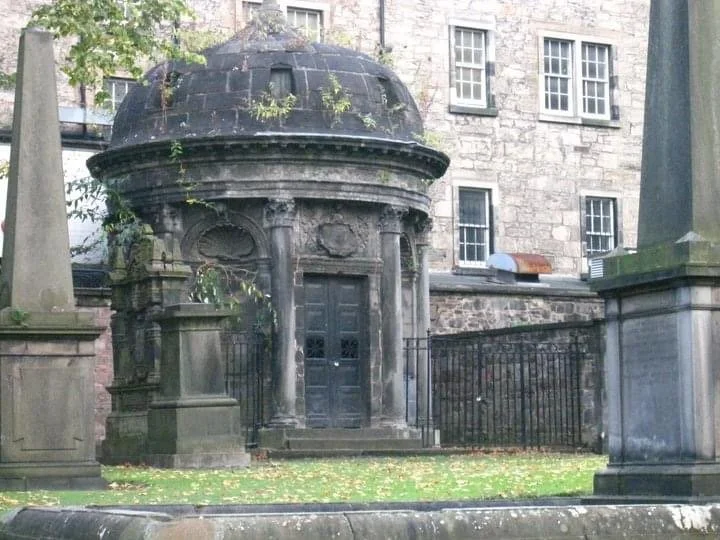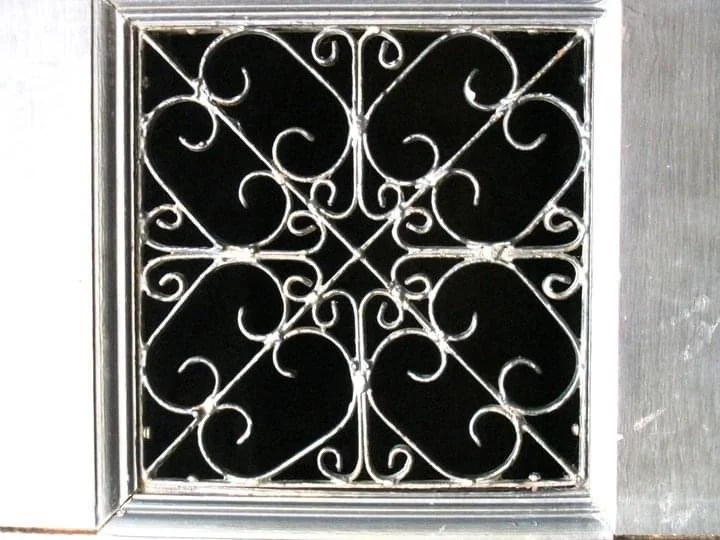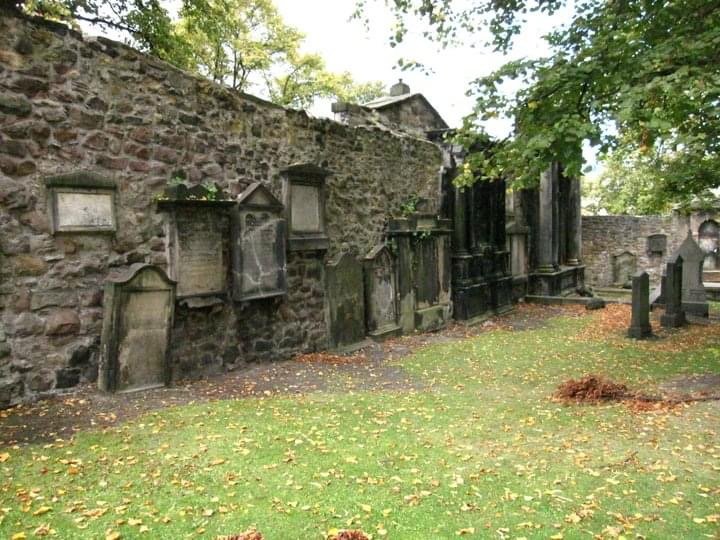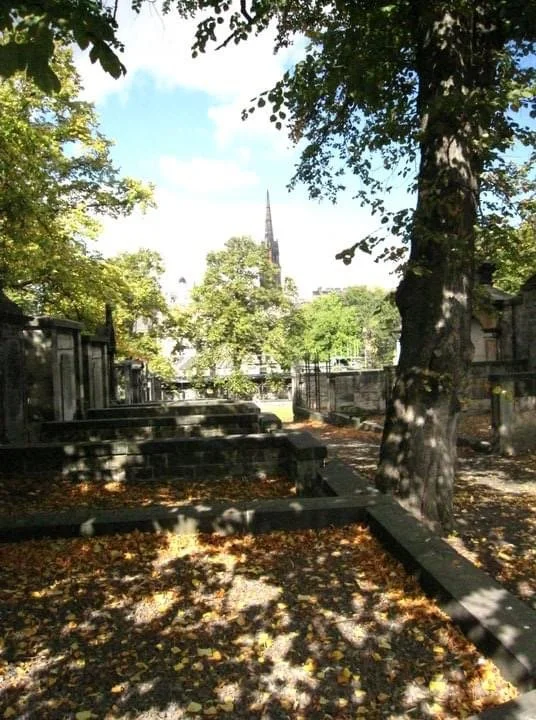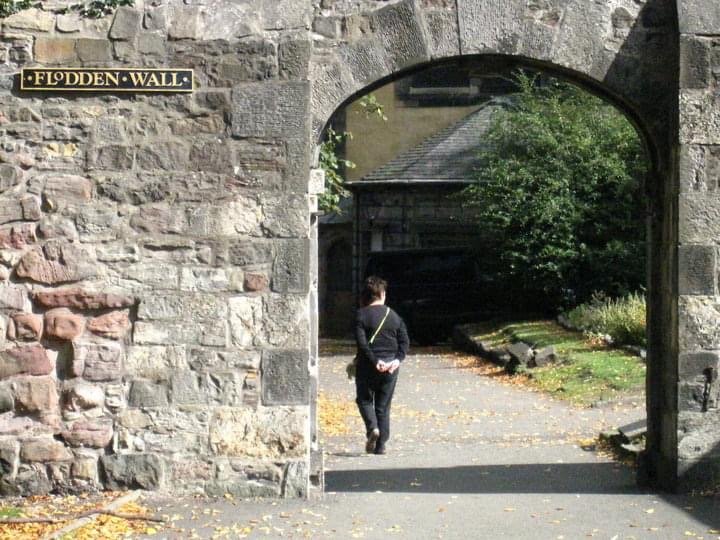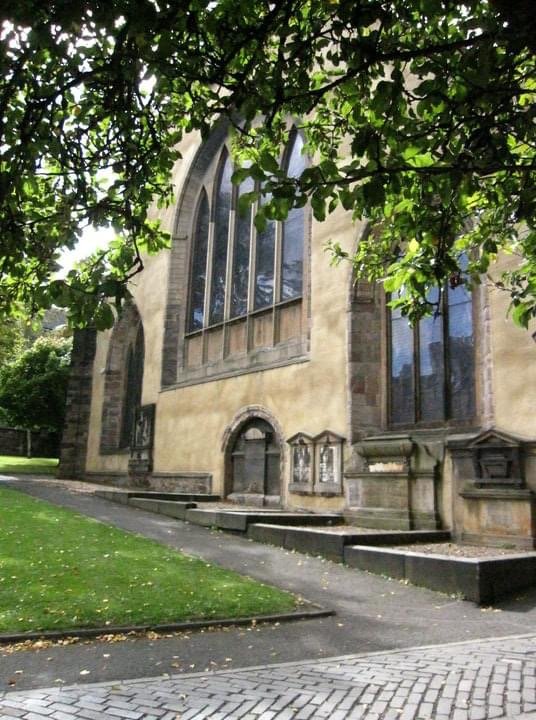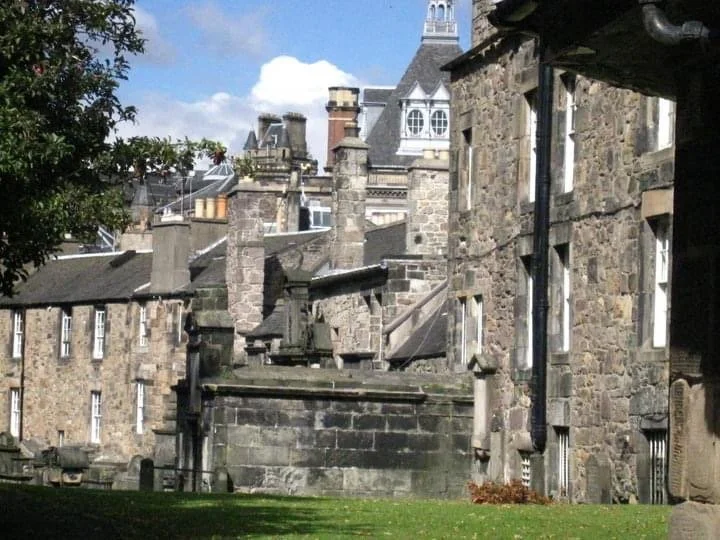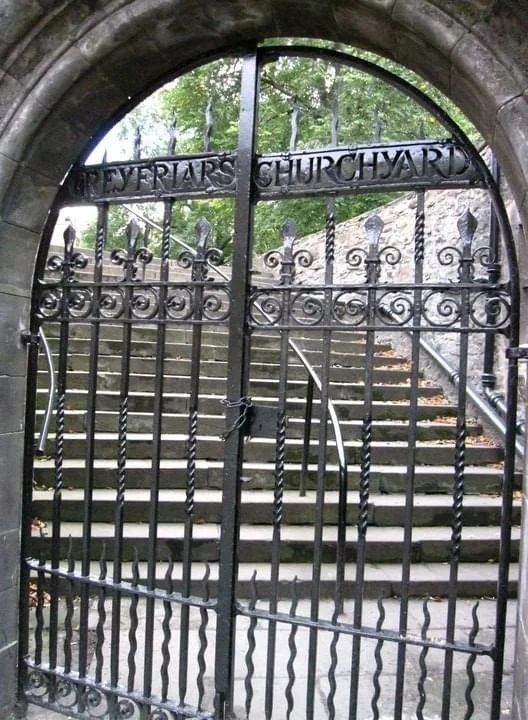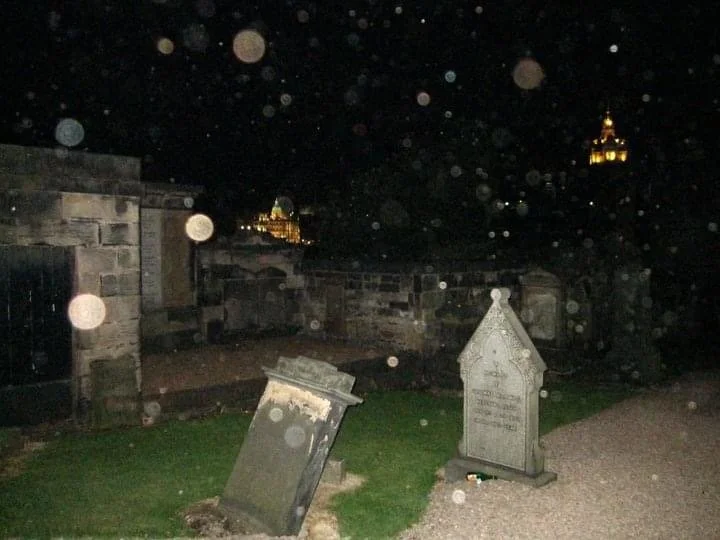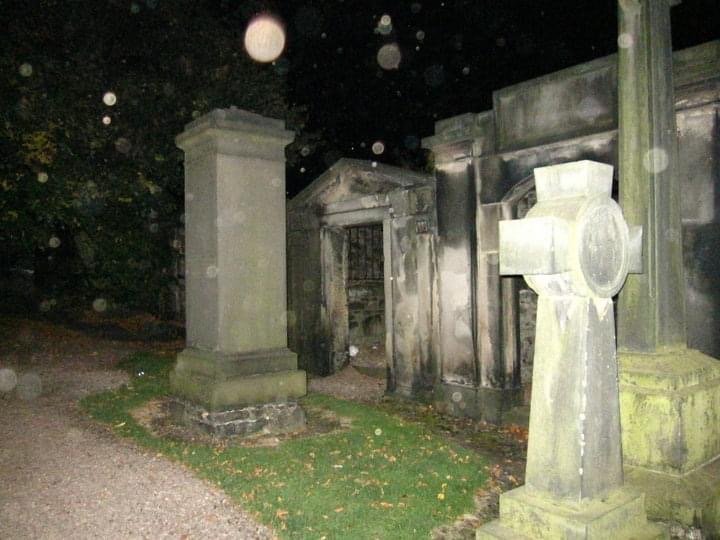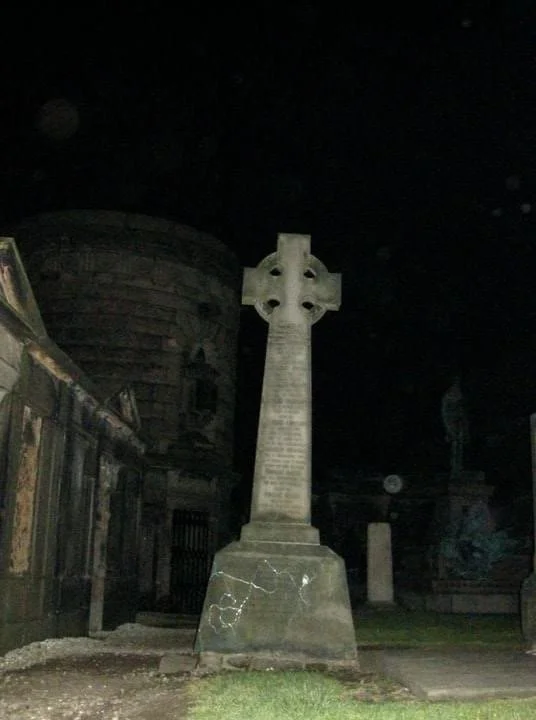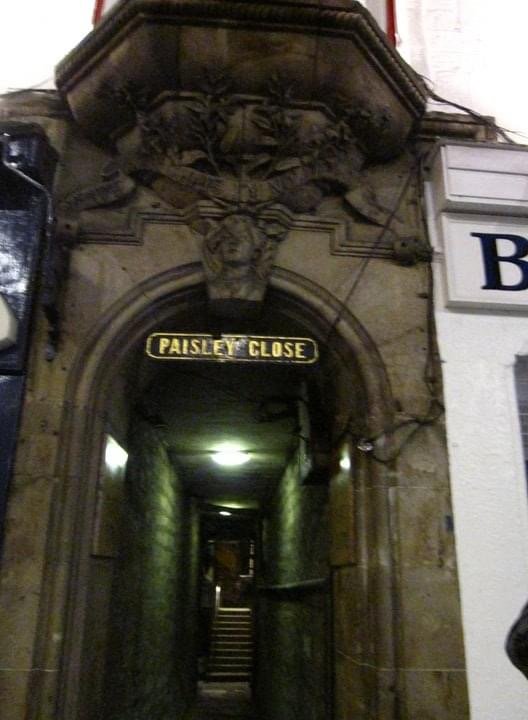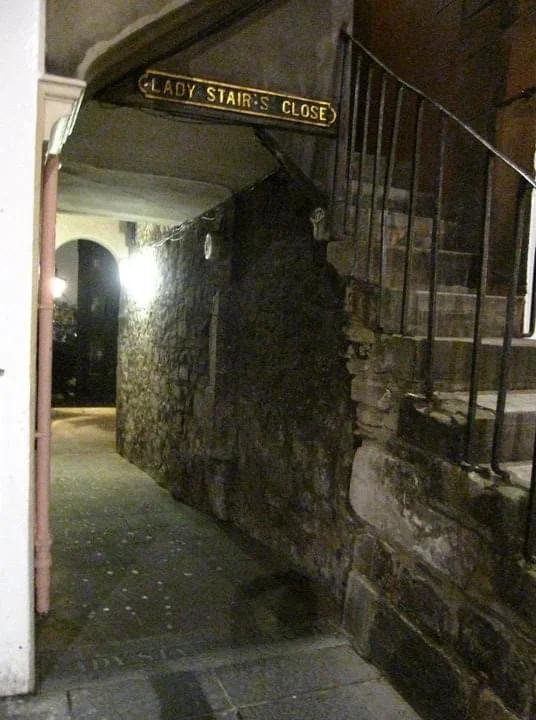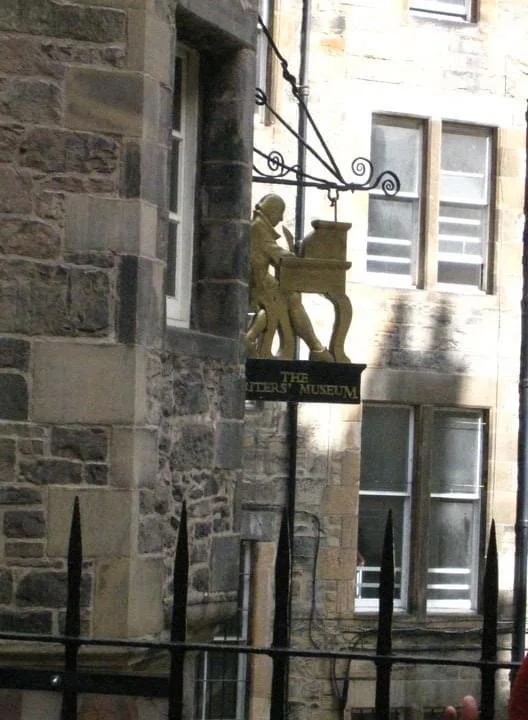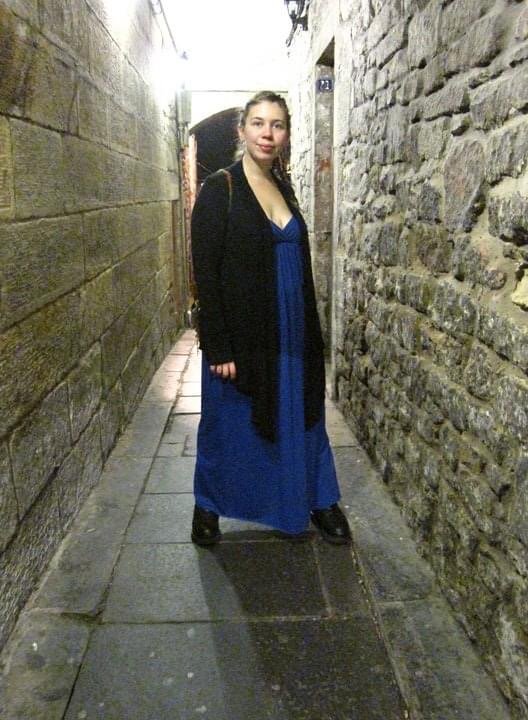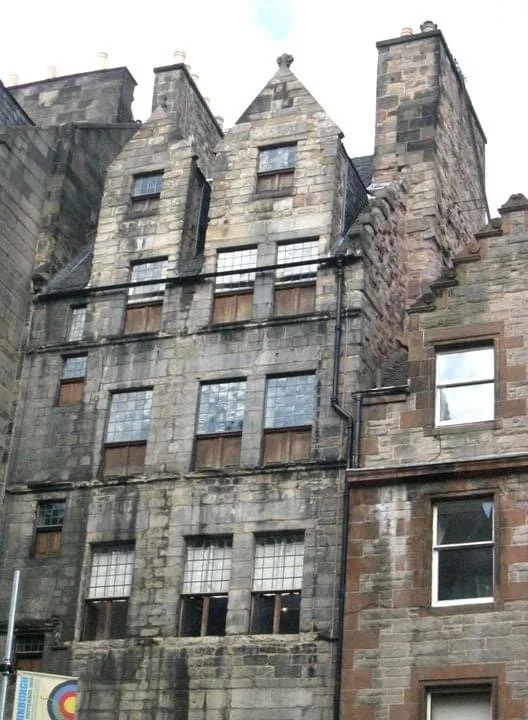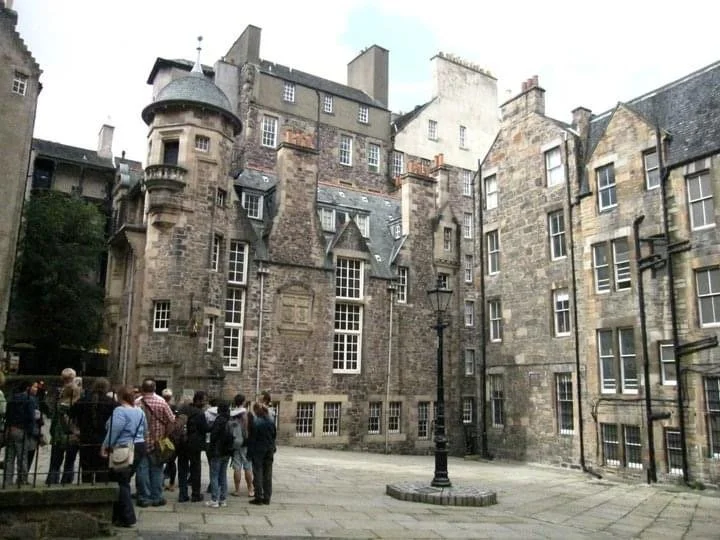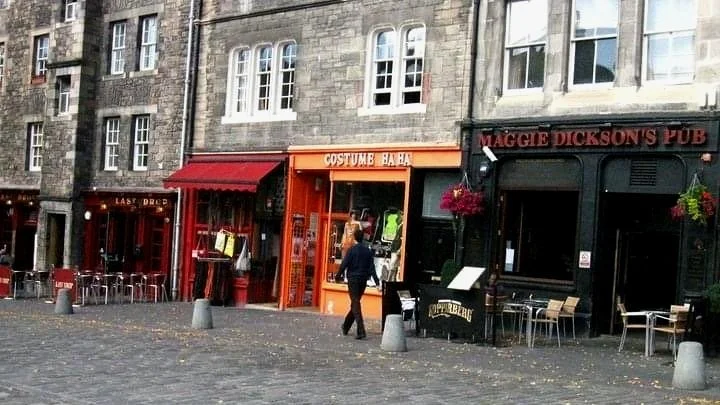“Halloween History and a Midnight Tour in Scotland”
Episode 3
Episode Layout:
Quote from Ray Bradbury’s The Halloween Tree
Introduction: Where are we going?
Legend: Jack and the Lantern
Liminal Origins & Historic Overview
Interpreting Death through the Lens of Travel
Spooky Scotland
Edinburgh’s Ghosts
Local Legend: Reder Road
Halloween send off + closing thoughts
Thanks for listening!
ink & watercolor sketch on handmade paper, by Jessie Howe
Ray Bradbury’s The Halloween Tree:
“It was a small town by a small river, and a small lake in a small northern part of a midwest state. There wasn’t so much wilderness around you that you couldn’t see the town; but on the other hand, there wasn’t so much town you couldn’t see and feel and touch and smell the wilderness. The town was full of trees. And dry grass, and dead flowers now that autumn was here and full of fences to walk on and sidewalks to skate on, and a large ravine to tumble in and yell across. And the town was full of… Boys. And it was the afternoon of Halloween, and all the houses shut against a cool wind and a town full of cold sunlight. But suddenly, the day was gone. Night came out from under each tree, and spread. Behind the doors of all the houses, there was a scurry of mouse feet, muted cries, flickerings of light. Behind one door, Tom Skelton, Age 13, stopped...and listened. The wind outside nested in each tree, prowled the sidewalks in invisible treads like unseen cats. Tom Skelton shivered. Anyone could see that the wind was a special wind this night and the darkness took on a special feel because it was All Hallows Eve. Everything seemed cut from soft black velvet; or gold, or orange velvet. Smoke panted up out of a thousand chimneys like the plumes of funeral parades. From kitchen windows drifted two pumpkin smells: gourds being cut, pies being baked. The cries behind the locked house doors grew more exasperated as shadows of boys flew by windows.”
This is an excerpt from the very beginning of Ray Bradbury’s classic novella, The Halloween Tree-- and it masterfully evokes the atmosphere classically imagined when we think of All Hallows Eve. Sometimes, I find the truth and heart of things is best expressed through fiction. Especially with matters of the supernatural…
This seems especially true of the mystic, magical, ominous, and exciting night we celebrate today as Halloween. A night of darkness, of mystery, and infinite possibility. Where witches fly, black cats own the streets, ghosts and spirits roam freely, our ancestors can communicate from beyond the veil...and the moon beckons us to dance in the wonders of the night. Kids parade door to door, people of all ages dress in costumes and celebrate. Bonfires are lit, and pumpkins carved. Music, dancing, and decorations liven the streets. We gather together, go explore the haunted corners of the world in search of adventure and the thrill of the unknown. Ghost stories, scary movies, warm drinks, and the security of home draw us indoors as this fantastical night of revels fades to dawn. Across the world, we are unified in this night’s celebration and fascination with death, and all things beyond. Halloween comes but once a year, but--where does it come from?
An enchanted path in late October, at Fairy Stone State Park (Virginia, United States). Photography by Jessie Howe.
Introduction: Where are we going?
Tonight, on this Episode of the Enchanted Path, we are taking a journey through time and across the world. I’m recording this on Halloween, and I can think of no better way to celebrate the occasion this year than to explore the origins of this wondrous holiday, with you all. Tonight is a time of mystery, of magic and superstition. A liminal space, suspended between autumn’s vivid colors and winter’s barren shadows. There’s an entire host of ways to observe this holiday, and we will touch upon several of them. From the festive colors and familial bond of Mexico’s Dia De Los Muertos, to Ghostly legends of Old Europe and the American fascination with haunted houses and horror films.
Here, we’ll start at the beginning…
Well, at least what we can best surmise as the beginning, by exploring the historical origins of the Halloween we celebrate today.
So, let’s grab a warm drink, settle into a soft blanket, light a candle, and gaze into the twinkling chill of the stars. Raise your pumpkin lanterns. And whatever you do, do not let your light go out. Tonight, we will float like a spirit over the earth...and explore stories of this very special time of year.
ink & watercolor sketch on handmade paper, by Jessie Howe
Legend: Jack and the Lantern
Young Margaret swung open the front door with a moaning creak, and stepped into the dusky evening. It was cool outside--a damp chill clung heavily upon the grey air. Long bands of mist had begun to settle upon the brush and bracken. Broad trees loomed darkly above with the last of their leaves clinging to the branches, clattering in the rising wind. Her eyes followed a flock of dark birds, crying as they swept across the colorless sky. She was sent over to the neighbors to retrieve her younger brothers, who were supposed to have returned home before dark. It was All Hallows Eve, after all--that night of mischief and magic, of foreboding tales, fortune telling, and wandering apparitions. All manner of forest folk were thought to be at their most maniacal, seeking out travellers, children, and any others too foolish to stay in.
As Margaret walked through a passage of hedges and followed the winding stretch of road, she noticed a curious light before her. It was faint, at first...then grew into a brilliant flame. A floating orb, swirling above the ground. It moved--subtly, spiraling in place. She blinked, and refocused her gaze. But there it was--and growing brighter still!! She instinctively took a step towards it, entranced...and then stopped herself. Wait, she thought… is that? She had heard the stories, from her Grandmother and others in the town. About floating lights, that rise from the depths of the woodland brush and draw people to their doom. If she were to follow, they had warned, she could be lost in the night until morning...or worse still...forevermore. It was so beautiful, and fascinating to watch...could something so bright really be so harmful? Margaret’s senses overtook her desire to follow it, and she stopped her feet from crossing the edge of the path. It’s All Hallows Eve, she thought. For goodness sake, I should know better! She forcibly turned her stare from the light, focused hard on the road ahead, and continued to her neighbor’s front stoop. Instructing her brothers to follow her and not look into the woods, she took them by the hands and led them bravely back home, arriving just before the sunlight yielded completely to the dark cloak of the night.
The Will-O-The-Wisp is a legend with deep roots in Ireland. This foreboding, beckoning ball of light--known as “Willie the Wisp” or “Jack the Lantern”-- is a mischievous spirit, intent on leading people astray. Interestingly, it connects with the origin of our modern-day tradition of carving pumpkins. Jack-O-Lanterns began in Ireland with the carving of fearsome faces into turnips or potatoes, and illuminating them with candles. It was believed that the light from the flame and the fierce expression would scare off malevolent spirits. When European settlers reached America, they switched to pumpkins, to continue this tradition--which were more plentily available and easier to carve than turnips, potatoes, or large beets. The pumpkin-carving method of creating Jack-O-Lanterns has made its way back across the Atlantic, where it is practiced today.
An old Irish legend about the origin of Jack-O-Lanterns tells the tale of Stingy Jack, who--true to his name--attempted to cheat the Devil from his money, and paid an eternal cost.
In this story, Stingy Jack invites the devil to join him for a drink. But, Jack doesn’t want to pay for it. He convinces the Devil to turn himself into a coin, so that he can then pay for their drinks. After the Devil agreed and did this Stingy Jack was quick to pocket the coin, cleverly placing it next to a silver cross. This trick prevented the Devil from changing form again, and he was trapped in Jack’s pocket as the coin. Eventually, Jack decided to free the Devil--but with specific conditions. He bargained that the Devil would not bother him for one year, and--should he die--the Devil would not claim his soul upon his passing. The following year, Jack yet again managed to trick the Devil. This time, Jack convinced him to climb a tree. While the Devil was in the tree, Jack carved a cross into the trunk, which prevented the Devil from climbing back down. He then promised to free him on the condition that he not bother him for the next ten years. Soon after this agreement was made, Jack died. But, he was not allowed into heaven due to his unsavory ways. The Devil was equally upset by Jack’s success in deceiving him, and would not permit him to enter hell. Without a place to go, Jack was lost in the space between--doomed to wander the earth for all eternity. It is said that the Devil sent Jack into the night with a single burning coal to light his way. In some versions of the story, it’s a spark of Hellfire. In either case, Stingy Jack placed the tiny ember into a carved out turnip, which he then used as a lantern. He has been wandering the world alone, ever since.
Liminal Origins & Historic Overview
To understand the story of Halloween better, let’s go to the very beginning--or at least, what we can surmise of it. You see, the origins are as murky as the holiday itself, enshrouded in a mystical darkness. There are many cultural influences, interpretations, and variations of this unique celebration of death and the beyond. For this purpose, I’m going to start by looking at this through a wider lens, historically--and from that raven’s eye view, I’ll zoom in closer to specific places and traditions.
The origin of Halloween is most often associated with the ancient Celtic people, who lived approximately 2,000 years ago and were largely settled throughout the lands we identify today as Great Britain, Ireland, France, and Northern Spain. Now, it’s important to remember that we don’t have much to go on as far as clear records from the Celts themselves. “Celtic” is a broad term applied to describe a diverse people who traversed the whole of Europe. There were many tribes, including the Britons, Gaels, Gauls, Irish, and Galatians. These were diverse cultures with different languages, customs, beliefs, rituals, and religious observances. Most of the information gathered about them is derived from engraved symbols, artwork, and records written from the perspectives of their contemporary enemies. Celtic people mostly observed an oral tradition, where their ancestral knowledge was passed down through the spoken word. Memorization of this knowledge was an integral part of their culture. We should bear in mind that the writers of the classical period, specifically the Romans, would have seen the Celtic people as “barbarians” who posed a serious threat to power. They would have looked upon their traditions unfavorably. In 18th century Britain, a revived, rose-tinted view of who the Celts may have been arose from a desire to connect with their ancient predecessors--those who would have understood the land and natural forces, in the wake of modern industrialization.
Roots of Samhain
What we do know is that this was a time in the Celtic Calendar known as “Samhain” (SAH-wen), meaning “summer’s end.” Centered between the Autumn Equinox and Winter Solstice, it’s one of four major holidays that marked the onset of the seasons. The others are Imbolc in early February, Beltaine in early May, and Lammas in early August. Samhain was especially significant because it designated the beginning of the new year, on November 1st. In the prime era of the Celts, before the calendar was restructured, the Pleiades Constellation (also known as The Seven Sisters) shone at its brightest in the northern sky on this night.
The days we associate with Halloween held deep significance in the ancient calendar, as a time of transformation. Samhain can be best defined as a time of Liminality--a liminal space being a state of transition, between two phases. This is the point in the year where the harvest ends, and winter sets in. These associations were deeply connected to nature. We often hear that this is when “The Veil is at it’s Thinnest” between the realms of earth and the afterlife--just as the canopy of leaves in the trees thin to reveal a clearer view of celestial beings inhabiting the night sky. As the season changes, the world grows colder--just as living beings do in the transition of death.
Samhain was a time of gathering, to help ensure survival through the darkest, coldest months. People established fixed places in the landscape to meet, which united smaller communities. They all had to work together to survive--though there was no guarantee that they would, or that winter would end. Deeply held beliefs bordered superstition, and were faithfully practiced to help secure the coming of Spring. This thread connecting superstition with tradition still surfaces in our seasonal rituals today. The bridge of autumn to winter was a ubiquitously significant, transitional time of preparation, and its importance transcends cultural boundaries worldwide. With modern amenities such as electricity and heating systems, these rituals have morphed into a lighter, less consequential affair. Better provisions grant us the leeway to have more fun with what was once a sacred time to plan, prepare, and pray.
Interestingly, the Celts believed Samhain to be an auspicious time for prophesying and predicting the future. This makes sense when one considers the uncertainty of harsh northern winters, and the divine assurance they would seek for survival. They sought to commune with the ancestors, for guidance through the dark time to come.
The lighting of a great bonfire was a signature event of Samhain celebrations. It’s believed that those who attended the ceremony relit their own hearth fires from the central sacred bonfire, to help protect them through the winter. Fire was believed to be a cleansing force, and it seems only natural that the act of igniting a light would warm the chill of the winter darkness to come. This tradition, of lights on Halloween, has continued throughout centuries past in several forms. The lighting of candles to place in windows and guide souls along their way, setting jack-o-lanterns on front stoops, carrying lanterns carved from gourds, and leaving lights on the graves of loved ones are all expressions of this tradition. In the Scottish Highlands, ceremonial bonfires have continued to be lit on hilltops, to deter malevolent spirits on Halloween Night.
The playing of drums and dancing may have been a part of Samhain festivities, to help guide the spirits. Particularly the spirits of the restless and vengeful dead, known as Sluagh--there was a fear that such spirits could steal people away in the night. To elude these malevolent forces, the Celtic people would have worn masks and animal skins, disguising themselves. Their effort to protect the living by beguiling the spirits is believed to have inspired the Halloween tradition of wearing costumes. Music and dancing continues to be a part of celebrations today.
Samhain was, and continues to be, a collective time to confront and process mortality. A time to honor the dead, and pay homage to them in ritualistic practices. Ancients viewed the life and death cycle as one entity, with transitioning phases of existence. It’s interesting that our fascination with the darker side of life compels us to this day, at this time--it’s deeply ingrained in our ancestral memory. The act of honoring the dead surfaces in the simplest of gestures, such as leaving an empty chair out to welcome the ancestors to join the living at the table. In nations across the world, a plate of food or bowl of milk is customarily set on kitchen tables, door steps, or gravesites, as an offering for passing souls. This timing, of a raised consciousness around the spirit world and commemoration of the dead, surfaces across many diverse cultures and faiths. For example, the Jewish holiday Yom Kippur usually occurs in October, and involves saying prayers for loved ones who have passed on.
“We become them so we do not fear them.”
This philosophy of confronting fear and exercising the understanding that all is connected expresses that light and dark are both part of a whole. This is the essence of why we wear disguises on Halloween, to embody the darkness to better understand it. The view of death became more polarized with the rise of Christianity, and the concept of Heaven and Hell as a dichotomy of separate destinations. Gradually, good and evil became two paths as a product of choice--two opposing, separate forces. The understanding of the whole became split into concepts of love and fear. Of good and bad, right and wrong. Death became something to fear, rather than accept, because of the ever-looming, prospective threat of eternal damnation. These ideas emerged as a form of social control, to further empower the political forces of the church.
This is also how the shift occurred in perception where the old ways and pagan traditions became labeled as “evil,” or “of the Devil.” In the time of St. Augustine, the prevailing philosophy was that practices like witchcraft posed no threat, because they were considered an impossibility. In his view, all things were created by God, and therefore, nothing could be manipulated or contorted beyond God’s realm of creation. As time passed and this philosophy became more polarized, the emergence of the devil as a personified character in opposition to God grew in popularity. And tragically, this fear-driven perspective readily demonized ancient practices and knowledge that became categorized as “outside of the church.”
With this newfound weaponization of fear, it’s impressive that the ancient traditions surrounding Samhain prevailed. Because Christian beliefs and values were assimilated with existing practices around the harvest-to-winter significance, the essence of the holiday was able to survive.
“All Hallows Mass”
The Church adopted “All Hallows Mass” to occur during this revered, deeply rooted period of spiritual transition. The name “Halloween” is derived from the eve of “Allhallowmesse” in the middle English language. “All Hallows Day,” which is now celebrated as “All Souls Day” falls on November 1st. This holiday was originally designated on May 13th, but shifted in the 9th century to the autumn season, to coincide with the pagan traditions that had evolved from observing Samhain. “All Saints Day” was created to follow All Hallows Mass on November 2nd, making for a multi-day religious event. Thus, the Celtic festival of the dead became a church-sanctioned holiday.
Christianity is what gave rise to a direct association with ghosts, or spirits, and Halloween as an optimal time to communicate. This idea of connecting with the dead rose from the concept of purgatory, and praying for the souls of loved ones to transition to heaven. It became a time of remembrance. Some of trick or treating’s earliest origins surface in a practice from medieval England. Communities held “All Soul’s Day Parades” where villagers would “go a-souling” and travel across the town. Soul cakes--a specific kind of pastry with a cross scored in the top--were baked and given to these visitors and the poor in exchange for prayers, for their loved ones who had passed on. This tradition gradually evolved into children going from door to door to receive ale, food, money, and provisions. People also left plates of food on their doorsteps to appease the spirits and discourage them from causing harm.
Roman Influence
Ancient Romans may be responsible for establishing the association between Halloween and apples. In 43 AD, the Romans had conquered the majority of the Celtic lands, and their holidays became absorbed with traditions of Celtic origin. Feralia was a holiday in late October, when Romans commemorated the passing of the dead. A day to honor Pomona, the goddess of fruit and trees, also fell in the month of October. Pomona’s symbol was the apple. There’s an interesting correlation at work here, between the symbol of this holiday and the time of harvest where apples are in peak season. This connection could also help explain the origin of the tradition of bobbing for apples. A fun fact: apple bobbing is called “dooking” in Scotland.
Colonial Halloween
Gradually, as the centuries unfolded and colonization spread, seasonal traditions traversed the globe. Halloween first came to America due to the immigration of European settlers. At first, traditions were more prominent in southern colonies, as New England was very Protestant and they did not allow such festivities. The beliefs and practices of Halloween blended with those of the Native Americans, and the first events were public gatherings to honor the dead and celebrate the harvest. Singing, Dancing, and Fortune telling was a big part of these early celebrations. Colonial Halloween also held space for ghost stories and mischief making. Irish immigration during the 19th century helped establish Halloween as a national holiday, and widely popularized the tradition.
During the late 19th century, American communities embraced a movement to make Halloween more family friendly. It was widely encouraged to remove the more frightening aspects, and adapt activities for children. Consequently, Halloween became more of a community party, and lost most of its religious overtones.
The 20th Century
As Halloween crossed into the 20th century, it evolved into a more secular, community based holiday. However, the 1920s and 30s saw a dramatic rise in vandalism. Intense pranking plagued communities, and there was a strong push to cancel the holiday altogether. The “trick” in trick-or-treat was real--neighborhoods provided candy and other treats to appease the rambunctious youth and avoid being targeted. As the next decade unfolded into the 1950s, there was a rise in families with young children and a serious crackdown on Halloween night’s notorious vandalism. The holiday became geared towards the young, and festivities found their way into classrooms. In the 1970s, the rise of the horror film genre was paramount and yet again transformed the traditions of Halloween. Film entered a space once occupied by ghost stories told around a fire. Cult classics and monster movies became connected to Halloween in a new and predominant way, eventually becoming a tradition unto themselves and a way to experience the holiday.
Halloween Today
In today’s Halloween, TV specials, movies on streaming services, seasonal music, book releases, and podcasts carry the torch forward in spooky storytelling. These multifaceted forms of media are more accessible than ever, and contribute to the preservation of this intrinsic part of the holiday. While the traditions we cherish as a part of Halloween have been influenced by technology, there’s something about this night that keeps us wanting to touch the unknowable. Something in our bones yearns to connect with the ancient, the mysterious, the macabre, and the mystical. As the weather cools, leaves drift to the earth, and the sky darkens with gloomy clouds, we turn inward. To the hearth. To the company of one another. To the dark of an internal place.
And we prepare for the coming winter.
Interpreting Death through the Lens of Travel
The Grumpy Gnome and I often make a point to visit places of death and remembrance on our travels. Exploring how a culture interprets death is a fascinating and important gateway to better understanding it. We have explored cemeteries, mausoleums, cathedrals, ossuaries, and catacombs, to name a few. Some of these places of burial and remembrance are bright--with colorful flowers, family photos, and a celebratory tradition. Others are solemn, quiet spaces of reverence where candles are lit and prayers offered. Others yet are dark, mysterious, and cryptic--with the bones of thousands collectively ordered in a mass arrangement, to be remembered and honored.
A few haunting highlights from our travels across Europe & The United States…
From here, we will continue our journey into the meaning of Halloween, and interpret death through the lens of travel. Of all the places we have visited, one enigmatic wonderland in particular stands out--the ethereal, spooky, rich tapestry of legends that is Scotland. So...Grab yourself a cold bottle of Irn-Bru and beware the witches, goblins, & fairies. Hold your ‘neep lanterns high. Watch out for broonies, silkies, and phantoms lurking in the shadows. Fix your gaze on the unicorn’s forested path, because tonight, we are following all things darkly magical to their homeland.
From a walk through the narrow stone passageways of Edinburgh, Scotland
Spooky Scotland
Scotland, once known as the kingdom of Alba, holds a very special place in my heart. It’s the first country outside of our home in the United States that the Grumpy Gnome (Brian) and I travelled to, and I fell in love with being there right away. Honestly, it felt like home, in a way I’d never before experienced. I can best describe this as Hiraeth. There’s an inherent magic to this place that beckons to the deepest parts of the imagination, and draws you in. Scottish people are absolutely wonderful--they are alight with incredible heart, humor, and pride. I can think of no better place to explore on a night like this, as all things ghostly, mystical, and ancient abound across this country--from the mysterious depths of the oldest cities to the windswept peaks of the farthest moor.
The oldest Halloween traditions of Scotland are directly tied to Samhain, and involve the harvest. There was a sense of urgency to gather all of the year’s crops before November 1st, as it was feared that anything left after summer’s end was subject to destruction by the faeries, and other mischievous nature spirits. In the years since, it became customary to leave doors open for the spirits to pass freely through, and food on the table for departed loved ones. The lighting of fires, from large community bonfires on the peaks of hills to family hearths, was of paramount importance on this spectral night.
People of the Highlands had a host of traditions that roared to life on All Hallow’s Eve, as diverse and broad as the clans themselves. Many were closely tied to the water, due to Scotland’s countless lakes and close relationship to the sea. On the Isle of Lewis, people would pour ale into the water. This gesture was an offering to a Celtic water spirit named Shony, or Seonaidh. After gathering to witness the event, the islanders would celebrate by drinking the ale and dancing through the night in the fields. This yearly ritual occurred up through the 17th century, and was believed to help bless the fisherman with enough seaweed for the year to come.
While we are most familiar today with the term “trick or treat,” in Scotland, this is known as “guising.” In traditional “guisin’,” children would disguise themselves as evil spirits before traversing their neighborhoods. By blending in with the spirits, they’d be protected from wicked ghouls out to steal them into the night. But it’s not so easy as just knocking on doors and receiving sweets--guisers had to perform a trick before being rewarded with a treat, usually by telling a joke, singing a song, or reciting a poem. The treats given were traditionally different kinds of fruits and nuts, rather than candy.
Nut burning was a popular tradition for the recently betrothed, and those trying to gage their romantic futures. Each person would toss a nut into an open fire. If the nut quietly smouldered as it burned, then their union would be a peaceful one. But, if it hissed and crackled in the flames...well, the young lovers could be in for a stormy road ahead. Another Halloween method for divining your future loved one was by peeling an apple in a continuous strip, and then tossing it over your shoulder. It was said that the shape of the apple skin, upon landing, would resemble the first letter of your future spouse’s name.
Interestingly, the eating of pork on Halloween in Scotland was deemed illegal under the witchcraft act of 1735. Allegedly, this specific kind of meat was outlawed because pork bones had an association with witches’ spellcraft. This curious piece of legislation was not repealed until the 1950s! Today, sausage rolls and pork pastries have rebounded as a popular snack for the holiday. Treacle Scones is another classic food in the host of Halloween festivities. It’s a no-hands game where freshly baked scones are suspended in the air by a rope and covered with treacle--a rich molasses-like syrup. In this game, you must use your teeth to pull down the scone, before you can enjoy it!
Greyfriars Bobby in Edinburgh, Scotland
Edinburgh’s Ghosts
From the whimsical highlands and modern festivities, we will now turn down a darker road, into the historic capital of Edinburgh--and its many ghosts.
When Brian and I stayed in Edinburgh, we were absolutely enthralled by the city. We stayed at Castle Rock Hostel, just up the road from Edinburgh Castle, and walked through the misty streets all night upon arriving. We couldn’t sleep, we were too fascinated by everything around us. It’s truly like stepping back in time. Especially in the cobbled recesses of the medieval Old Town, which is home to a host of underground vaults, graves, and wickedly frightening secrets. If tales of murderers, cannibals, thieves, witches, and body snatchers peak your interest, then the darker side of Edinburgh would certainly be a destination to explore.
The walking tours in this city are a must, when you visit--and there are many to choose from! Especially the after-hours nightly ghost tours that guide you through the oldest, darkest, most haunting parts of the city. Every place here holds a story--many stories, in fact--and it would not be possible for me to tell them all in a single episode. For tonight’s midnight tour of Halloween, I’ll focus on the highlights and give you an overview of the many mysteries to uncover across Edinburgh.
Edinburgh was established around the remarkable Edinburgh Castle, built atop a natural fortification. While the castle’s position effectively shielded the city’s inhabitants from invaders, space was naturally constricted by the scope of this murky landscape. And by the 17th century, the population was growing… Space was constricted, so people built upward--and downward, into the vaults underground. This vertical approach in the architecture of Old Town led to some of the earliest examples of “skyscrapers,” and these tall, narrow structures truly are something to behold. Everything above-ground feels enchantingly weathered, smoky, streaked from years of rain...and slightly crooked from the settling of age. There’s a slant to this old city, a towering strangeness to it all. The cobbled streets slope downward from the raised spine of the Royal Mile, with narrow offshoots known as “closes” leading from either side of the main thoroughfare. More on those later…
A few highlights from our first walk through Edinburgh
The Underground
Mercat Cross is the site of the old market square on the Royal Mile, and a popular spot for meeting on the ghost tours today. It served as the stage for public punishments, which were nothing shy of gruesome. Many of Edinburgh’s night tours will lead you to the underground passages, which had archways and housed craftspeople at one time. As the city became more and more crowded, merchants tried moving below the streets to set up their stores. But, there were several issues with this. When it rained, the water poured straight downward--the vaults were eternally dank, and often flooded. There was no natural light, so they had to rely on fish-oil candles for illumination--which, when burned, had a rather pungent smell. As more people were seeking a space to settle in and do business, the Edinburgh Underground became a hotbed for criminal activity. Eventually, the craftspeople abandoned their shops, and the vaults were not rediscovered until the 1980s.
Today, the underground is home to several notorious ghosts. Some of these include an aristocrat, a shoemaker, a prowling “watcher,” and a little boy rumored to hold the hands of those passing through. The vaults have also been a very active zone for poltergeist activity.
A Cast of Characters
Edinburgh’s history involves a cast of very colorful, and at times darkly macabre, characters. There’s the formidable murderous duo, Burke and Hare--the city’s most notorious body snatchers. In the early 1800s, the medical school’s growing need for bodies to study and dissect were in short supply. “Resurrection Men” reached peak activity in this dark chapter, during which freshly buried corpses were excavated and sold to the school for a premium. In parts of the city, you can still see where iron cages were built above graves to protect loved ones from being unearthed and sold to science. People would vigilantly guard gravesites at this time, as the controversial practice of dissection was supposed to be reserved for criminals and other deviants who were recently deceased.
In Edinburgh’s Grassmarket, a pub is named in honor of Maggie Dickenson--an unconquerable woman who survived her execution. Maggie was forced to move back to the Scottish Borders from the city, after her husband abandoned her. She found work at an Inn to support herself, but became pregnant by the innkeeper’s son. Even though she gave the baby away, she was found out and brought back to Edinburgh, where she was forced to stand trial under the “concealment of a pregnancy” act. Ultimately, Maggie was found guilty, and sentenced to death by hanging in the Grassmarket. While her body was being transported to Musselburgh for her burial, the driver of the carriage heard banging and knocking coming from inside the coffin. They opened the lid to find Maggie alive! She was then pardoned, as they found her acquitted in the eyes of God. Her story is an empowering but deeply frustrating one--she prevailed as a survivor of the misogynistic abuses of the time.
While crossing Victoria Street, you may pass the spectre of the devilish self-proclaimed warlock, Major Thomas Weir. He carries a glowing walking stick--a blackthorn staff said to have writhed in flames like a serpent upon its destruction. Mr. Weir’s ghost has reportedly been seen pacing in front of his former home. His infamy rises from a proclamation that occurred late in his life, when he openly confessed to being in league with the devil to the shock of his community. After his confession, he was imprisoned near Calton Hill. He was in his 70s at this time--and later sentenced to death by strangulation.
Greyfriars Kirkyard
A visit to haunted Edinburgh could not be complete without a stop at Greyfriars Kirkyard, off Candlemaker Row. Greyfriars dates back to the late 16th century, and is home to many ghosts of its own. There’s the tomb of Sir George “Bloody” MacKenzie, which has been widely reported as a center of violently active poltergeist activity. One remarkable story tells of a homeless man who climbed into the tomb on a cold, stormy night to escape the rain. After entering, he fell downward and through a false floor, into a pile of rotting flesh from what was once a mass grave housing plague victims. Utterly horrified, the man clamored out of the tomb and ran screaming into the night. Legend has it that the sight of him prompted the night watchmen to flee in terror, as well. Ever since the break in, vicious physical attacks from unseen forces on those passing by have been reported. Experiences range from marks and bruises to cold bursts of wind, and even being thrown to the ground. Today, the tomb is chained closed--but you can walk right up to it, and stare into the abyss of darkness past the metal grates.
A more warmhearted tale tells the story of Greyfriars Bobby--a Skye Terrier who was cared for by policeman John Gray during the last two years of his life. After John’s passing, Bobby guarded his grave in the kirkyard for fourteen years. Bobby the dog captured the hearts of the public, who would bring him food and care for him. A man named William Chambers arranged for the City Council to pay for Bobby’s dog license, which protected him from being taken away. In 1871, Bobby passed away, and was buried just outside of the Kirkyard. A bronze statue was erected in his honor the following year, and remains there to this day. You can find Bobby’s memorial on the corner of Candlemaker Row and the George IV Bridge.
Greyfriars Kirkyard also provides rich inspiration for Harry Potter fans. Author J.K. Rowling was living in Edinburgh at the time of writing the earlier novels in the series. It’s said that she used to write at the Elephant House Cafe, just up the street. Several names on the tombstones at Greyfriars inspired characters, including Tom Riddell, Moodie, Scrymgeour, Cruikshanks, Black, Potter, and McGonagall. The site itself is said to have been the inspiration for Godric’s Hollow, the resting place of Harry’s parents.
Travel photography, from our visit to Greyfriars Kirkyard
Calton Hill
When we were staying in Edinburgh, we went on a fantastic walking tour that led us around Calton Hill, where we descended a staircase called Jacob’s Ladder into the Old Calton Burial Ground. On Halloween Night, Calton Hill hosts some of the festivities of the epic Samhuinn Fire Festival. It’s a spectacular procession sponsored by the Beltane Society, that begins at 7pm every year on Halloween. Costumed artists use fire, music, and dance to tell stories atop the hill, and dramatize the battle between the winter and summer kings. Down in the Grassmarket, other parts of the festival include street theater, acrobatics, dancing--and more fire! The city roars to life in the celebration.
Old Calton Burial Ground is located at 27 Waterloo Place, and is home to many great Scottish philosophers and intellectuals. The graves are old here, and many are beautifully intricate. This cemetery includes the only American Civil War Monument outside of the United States, which was established to commemorate Scottish-American soldiers who perished in the devastating conflict. I distinctly remember the feeling of walking around here. The darkness of the night felt dense, and the starlight piercing and clear. There was a charge to the air, as though there were many people in a space, but the space was open and empty. I felt like I was being watched from all directions, but not in a threatening way. It’s one of the most intensely alive spaces of the dead that I’ve ever passed through.
My night photography with a film camera, walking through Old Calton Burial Ground on an October night
The Closes
Walking back from Calton Hill into Old Town, you will likely pass several entrances to the Closes of Edinburgh. A map of the medieval street layout of Old Town resembles the bones of a fish, with the Royal Mile as the central spine, and dozens of narrow lanes lined on either side. The close quarters of these many passageways were referred to as “closes,” “wynds,” and “courts.” “Closes” are the narrow lanes and alleyways that connected to courtyards and private property behind the Royal Mile. It’s estimated that there were once over 200. Many of the closes slope steeply downward, and are walled on either side by the tall expanse of building exteriors. The effect is tunnel-like, as though it’s leading you underground. Several of the closes are infamous, and considered to be intensely haunted.
Perhaps the most famous is Mary King’s Close. This narrow, gated lane is believed to have been used to quarantine victims of the plague outbreak. Those trapped here died here in agony, and are said to haunt the passageway of the close to this day. Brodie’s Close is another famous one, named after Deacon Brodie. The Deacon was a respected citizen by day, but a burglar by night. He’s thought to have been the inspiration for Robert Louis Stevenson’s famous novel, Dr. Jekyll and Mr. Hyde. Paisley Close is characterized by a face of a young boy carved over the entrance, which commemorates Joseph McIvor. In the middle of the night in 1861, a tall tenement building collapsed and tragically crushed many of its residents while they slept in their beds From a mass of fallen debris, rescuers heard a small voice cry out, “Heave awa’ lads, I’m no’ deid yet!” They followed the voice to find 12-year-old Joseph McIvor, who had miraculously survived the collapse. His words are immortalized in an engraved stone banner above the doorway to the close.
Lady Stair’s Close leads to The Writer’s Museum, which celebrates the history of Scottish poets and writers including Robert Burns, Sir Walter Scott, and Robert Louis Stevenson. This path will also guide you to Makar’s Court. A Makar is a name for a Scottish Poet or Writer, and there are paving stones here inscribed with verses from Scottish literature. Literary history is commemorated in these stones, with a single lamppost at the center to illuminate the open space. New flagstones are added on a continual basis, as the legacy of Scottish literature grows.
Wandering through the closes and Makar’s Square, by The Writer’s Museum in Edinburgh
Maggie Dickenson’s Pub
The Grassmarket, Edinburgh, Scotland
Haunted Pubs
What better way to close a night of revels and ghostly legends than in a haunted pub? There are more than a few to choose from, all across Edinburgh. Honorable mentions include the Banshee Labyrinth, which is located in an underground cave on Niddry Street. The Frankenstein Pub is themed and decorated to embody Mary Shelly’s classic horror novel, and can be found off the George IV Bridge. The White Hart Inn on Grassmarket is another haunted establishment, among the oldest in the city--with a strong reputation for poltergeists and paranormal activity.
Time to finish that drink. For now, we must pivot back towards the place where we began, and leave Scotland and all of its glorious mysteries until our next visit. There is time for one more dark tale…
Local Legend: Reder Road
Leaves scraped breezily across the rough pavement, as Sam parked his car and stepped alone into an empty clearing. It was dusk--that liminal hour when day fades to night, and the shadows emerge. He had arrived early, and was waiting on his friends, Ben and Sawyer. It was late autumn, 1999--a time before smartphones and google maps, when the secret, haunted corners of the world were shared by word of mouth and the thrill resided in their discovery. He squinted ahead through the gathering gloom to peer down a narrow passageway. The pavement was worn and cracked, overgrown with dry, papery weeds. A cement barricade blocked the entrance to prevent people from driving through. Not a soul was around. This was definitely the place.
Curiosity overtook patience, and Sam proceeded towards the entrance. After just a few steps, a rumbling sound charged forward and startled him with a jolt. A black pickup truck with a chrome fender tore through the silence and roared to a stop, screeching as it swerved directly in front of him to block his path. The truck was a boxy shape, probably a late 1960s or early 70s model. It came from literally nowhere--just a moment before, this place was completely empty. Sam felt his heart begin to race, and he drew a deep breath to center himself. Whatever this was, he could handle it. And his friends were on the way.
A man rolled down the manual window and leaned out of the truck, steadied by his elbow rested atop the door. One hand remained casually draped on the steering wheel, as the truck’s engine continued to rumble. The man wore a ballcap, a mesh-backed truckers hat, and was dressed in a grayish mechanic’s jumpsuit. A thick, greased Jheri curl escaped the hat and draped languidly below his forehead, eclipsing one eye. He appeared to be African American, but something was--off. The color of his face--it seemed...wrong. His features were clear enough, but his skin was sickly pale and bluish. Sam blinked several times, and tried to adjust his eyes through his glasses. But--nothing changed. The pallid face and steady expression remained. Suddenly, the glassy eyes adjusted to stare directly back--a thin mustache contorted into a half sneer as the man spoke.
“Hey--what are you doin’? The man asked, his voice low and clear. His posture remained still, with unwavering focus.
Sam fidgeted subtly, swallowed, steadied his feet. He answered, “Oh, just seeing what was beyond the dead end road.” Sam averted his glance to the dangling fuzzy dice hanging from the rearview in the truck, to distract from the cold dread overtaking him.
“I know what you’re looking for.” The man replied, ominously. His stare intensified.
“You want to use the other entrance.”
And with that, the glassy eyes shifted forward, the truck’s engine swelled, and the man drove off without another word--as mysteriously and suddenly as he had arrived.
Sam exhaled, and shivered. Had the temperature dropped that much? There was no sound--no birds, crickets, or any sign of life. Just the slight rustling of leaves in the cold, dry wind. He took another look at the opening to Reder Road. And he couldn’t bring himself to take another step forward. Everything in him told him to leave. To run the other way, and never return. Sam heeded this warning and returned to his car, trying to steady himself from shaking from what he’d just experienced.
The darkness was abruptly shattered by the sound of an alarm clock. Bright, unwelcome beams of sunlight bounced across the room, and Sam woke up. It was morning. It had been a dream--the most vivid, real dream he’d ever had. What day was it? Oh right--Saturday. Shit--this was the day he was supposed to go to Reder Road with Ben and Sawyer. They’d been investigating the most haunted places around their midwestern hometown, and Reder Road was said to be one of the best paranormal sites in the area. Local rumors swirled around the dark legacy of its past. The road was once a popular site for Chicago’s mafias to dump bodies, a place where people went and never returned. The city had barricaded the entrance to prevent commuters and the curious from driving through. It was home to a host of wandering, lost souls, and they couldn’t wait to go check the place out for themselves.
Sam was shaken from the dream. He didn’t think he could do it. Everything about that had felt like a stark warning. The other entrance? What did he mean? Was there another entrance…? If there was, it’s not one that anybody had heard of. Sam had to work a shift at the movie theater that night, and decided to tell his friends to go ahead without him. He almost never dreamed, and this--well, this felt like something to be taken seriously.
Later that night at the theater, Ben and Sawyer rushed into the lobby, their eyes wild with disbelief. They told Sam that they’d just come from the entrance to Reder Road. And the strangest thing happened. After they climbed past the barricade and started down the road, this random guy in a vintage truck pulled up behind them out of nowhere, and said--
Sam stopped them. “Did he tell you to go to the other entrance?” he asked. “Whoa...what, wait-- how did you know?!” Ben and Sawyer reacted. “Did you happen to notice his skin?” Sam asked them. “Yeah, it was really weird--like, colorless and almost blue. It totally creeped us out.” They hadn’t gone any further down the road after that, and decided to instead come tell Sam about what had happened.
Several months later, Sam accompanied his Dad to a local junkyard, to search for parts. His dad was a professional mechanic who repaired and rebuilt motorcycles on the side. While Sam’s Dad was talking to the owner, he noticed a gap towards the back of the lot, and what appeared to be an overgrown road just past it… Sam was curious, and asked the owner where it led to. “Oh,” the owner responded, as he glanced casually towards the path. “That used to connect to Reder Road, but it’s been closed off for years now.”
Sam felt a shiver rush down the entirety of his spine, right to the soles of his feet. The other entrance. The mechanic’s jumpsuit. The 1960’s truck. Just who exactly had he met in his dream, who had apparently also confronted his friends on the other end of the infamous Reder Road? Had he met one of the many souls lost to time and the horrors of this secretive, tragic place? Did the man appear to warn him to stay away, or to lure him to a dark fate? In either case, it’s an experience that Sam has never forgotten. And, he never again returned to follow the haunted path of Reder Road.
Halloween Send Off + Closing Thoughts
Many ghostly adventures can be found tucked away in our own backyards. In any given place, a host of mysteries await discovery. Even in the sprawling, quiet farm fields of rural Indiana. Reder Road has gained a reputation for ghost hunting, and has in recent years been opened with the development of bike paths and new neighborhoods. But, the stories of the past remain. This incident, with the ghostly man in the truck, happened to a very close friend of mine. There are many other experiences I could share, where the supernatural surfaces in the simplest of settings. Old cemeteries, abandoned barns, wooded lots, haunted theaters, courthouse clock towers, remote roads, and rickety bridges--they all have a tale to tell. I look forward to sharing their stories.
But, dawn is approaching, and All Hallows Eve is reaching its end. For tonight, I will return you to the realm of the living and leave you with this: There is always magic waiting to be found, if you seek it. If you believe it. Every place holds a story waiting to be heard. Approach with an open mind, and heart. Listen.
And keep your light shining on.
Thanks for Listening!
Thank you so much for joining me on this midnight tour of the delightful enigma that is Halloween. I hope you enjoyed the journey, and learned something new about this unique and beloved holiday.
This episode was written and produced by me, Jessie Howe! You can find all resources and episode transcripts for The Enchanted Path Podcast on my website, The Adventures of Jessie and The Grumpy Gnome, at jessieandgrumpygnome.com. Our podcast is streaming on platforms including Spotify, Anchor, and Apple Podcast. If you enjoyed this episode, please consider supporting the show by joining our Patreon--The Enchanted Path Podcast. Memberships start at just $1, and give you exclusive access to early releases, bonus episodes, artwork, music, custom merch, and monthly gift boxes!
Thank you for listening, and until next time--happy adventures!
ink & watercolor sketch on handmade paper, by Jessie Howe
Show Notes
Our Website:
https://jessieandgrumpygnome/the-enchanted-path-home
Our Patreon:
https://www.patreon.com/jessie_and_grumpygnome
Resources:
https://www.history.com/topics/halloween/history-of-halloween
https://www.history.com/topics/ancient-history/celts
https://www.history.com/news/history-of-the-jack-o-lantern-irish-origins
https://www.nts.org.uk/stories/scottish-ghost-stories-witches-murder-and-folklore
https://www.history.com/topics/halloween/halloween-around-the-world
https://trulyedinburgh.com/things-to-do-in-edinburgh/calton-hill/
https://greyfriarskirk.com/visit/kirkyard/
https://www.indianahantedhouses.com/real-haunt/reeder-road.html
Edinburgh Pub & Cafe Locations:
Banshee Labyrinth (underground Cave at 29 - 35 Niddry Street)
Frankenstein Pub (embodies Mary Shelly’s Novel, 26 George IV Bridge)
The White Hart Inn at 32 Grassmarket (one of the city’s oldest)
The Elephant House (Cafe is temporarily closed) 21 George IV Bridge
Books:
The Halloween Tree, by Ray Bradbury
The Hidden History of Holidays, by Hannah Harvey, The Great Courses
The Ghosts of Scotland: A Collection of Ghost Stories Across the Scottish Nation, by Sean Mcloughlin, Charles River Editors
All text, research, images, audio, and original music by Jessie Howe.







